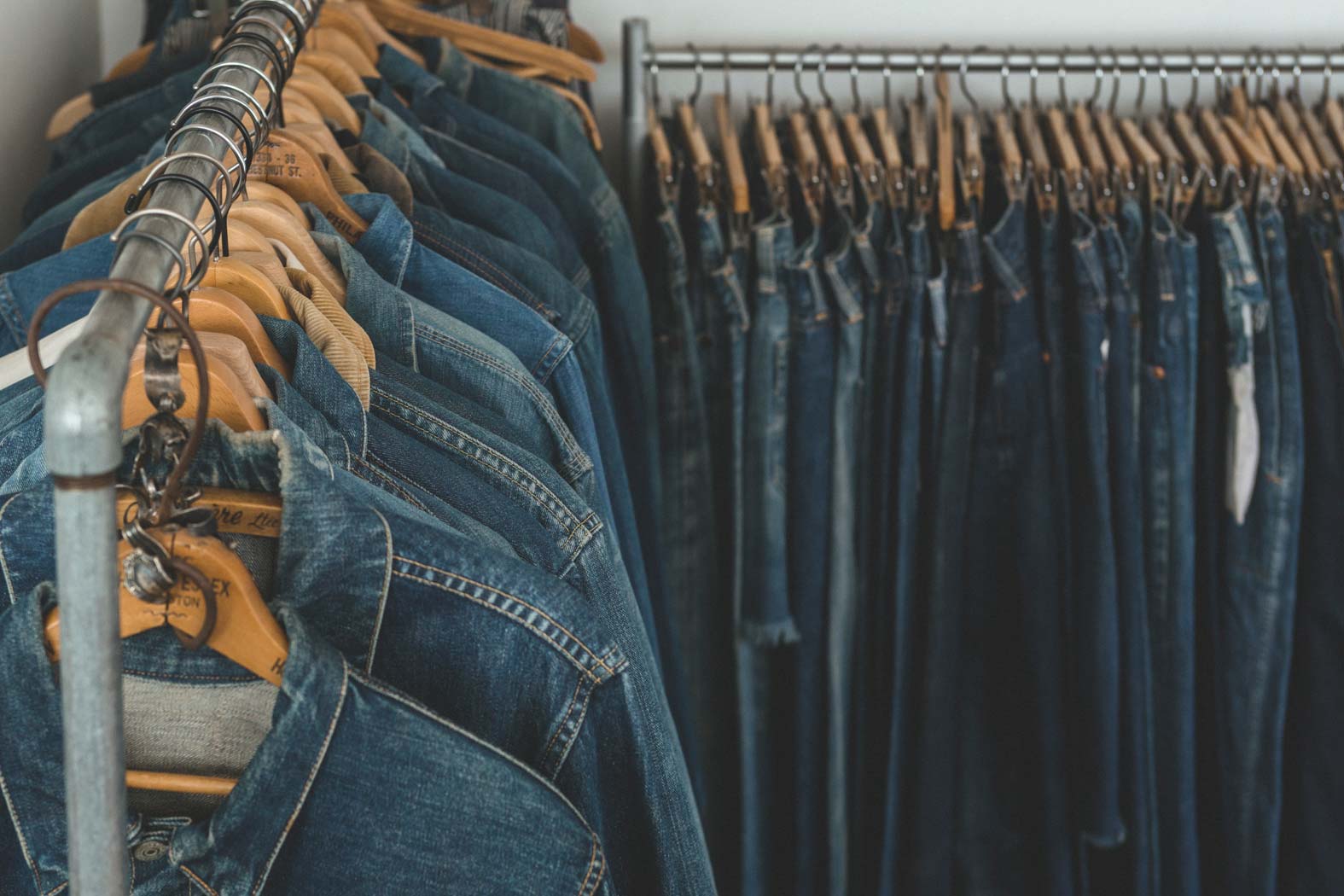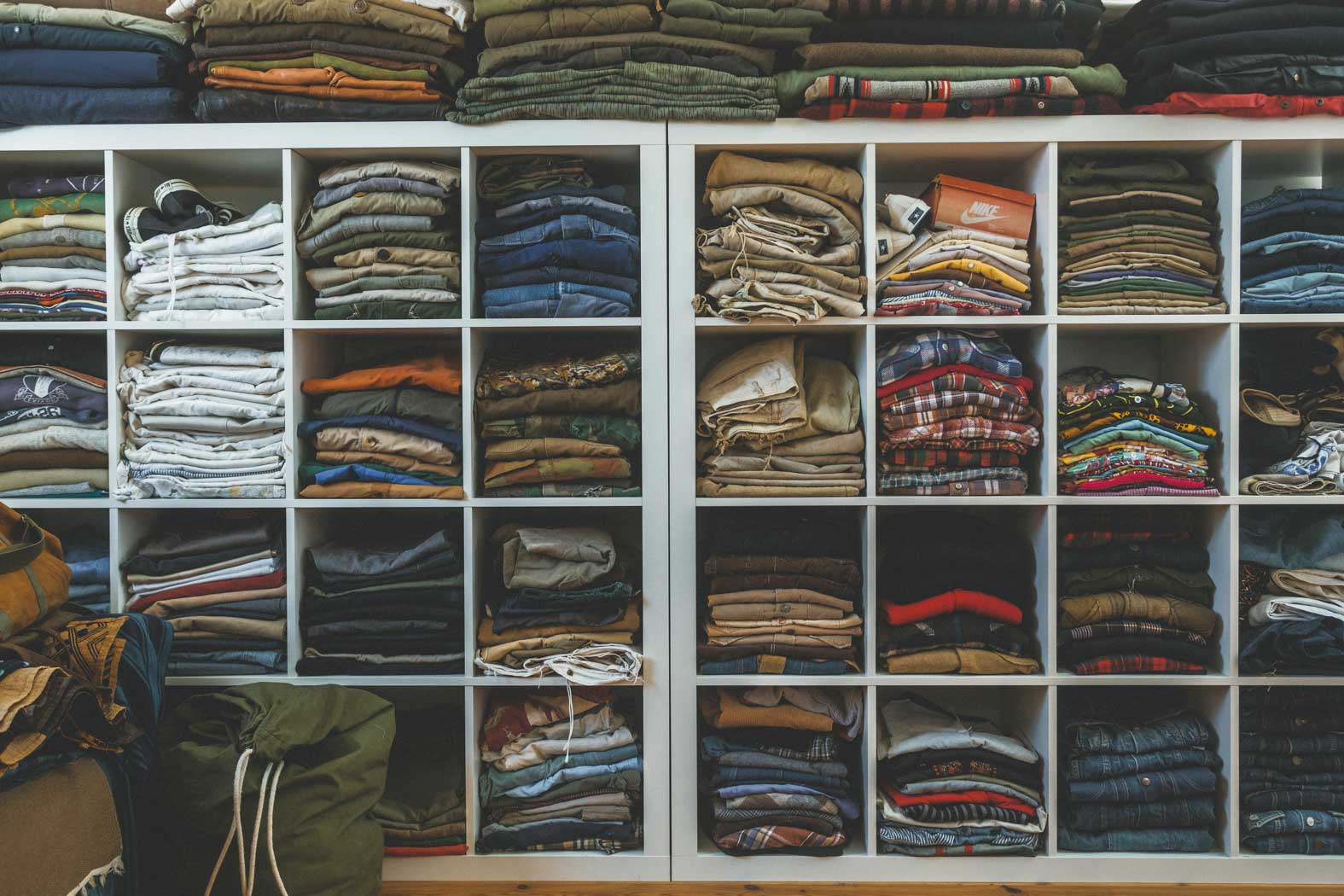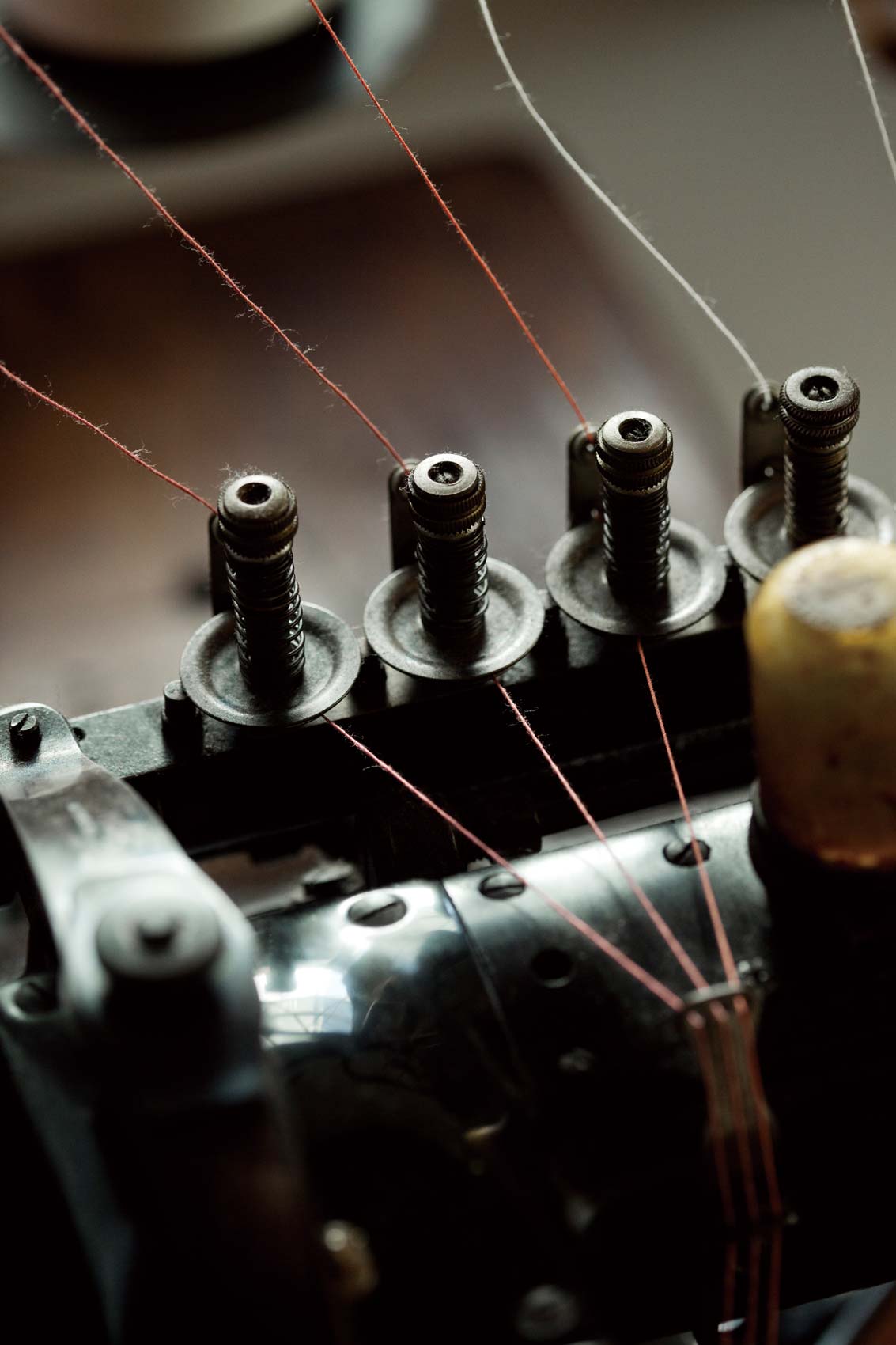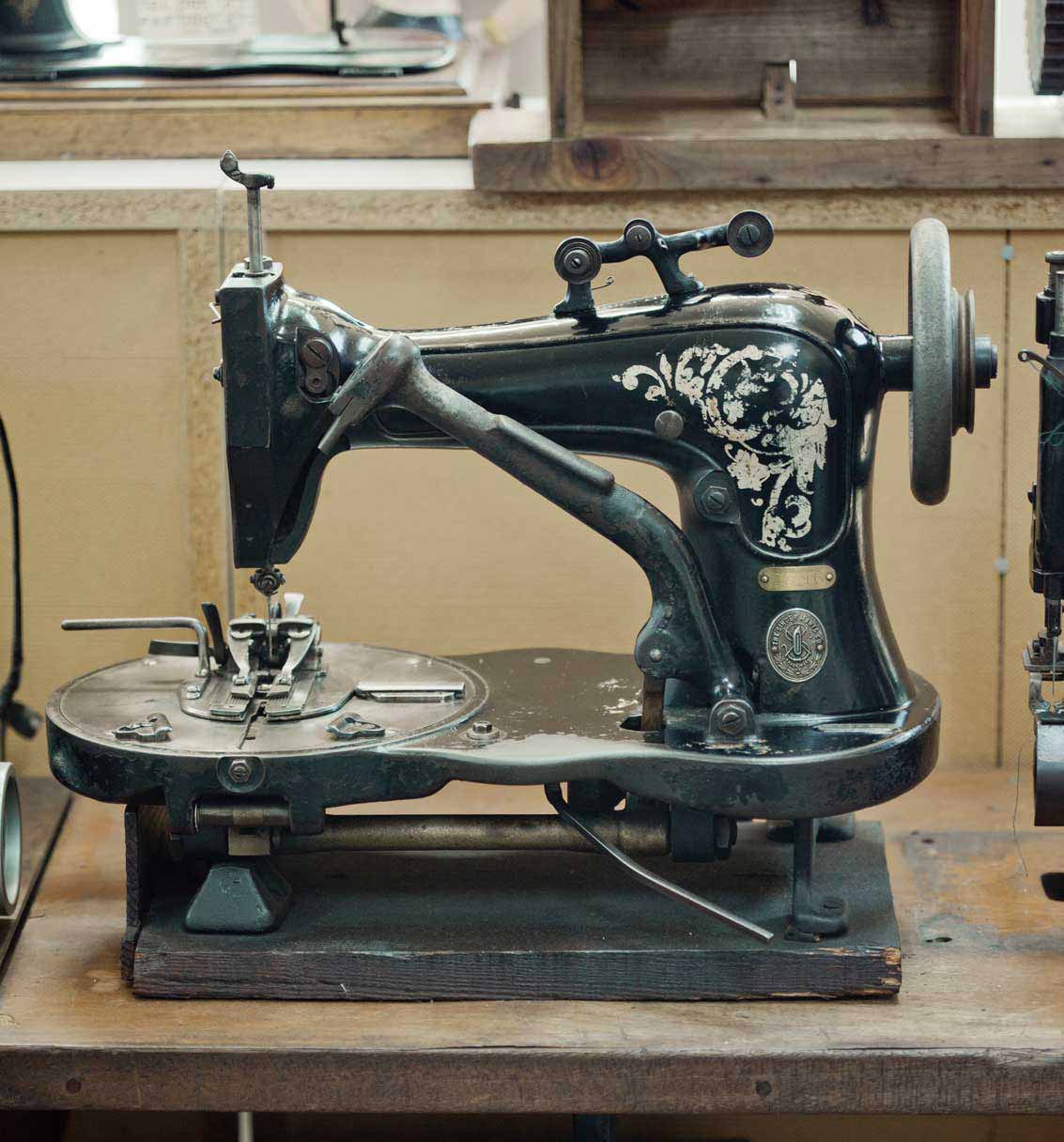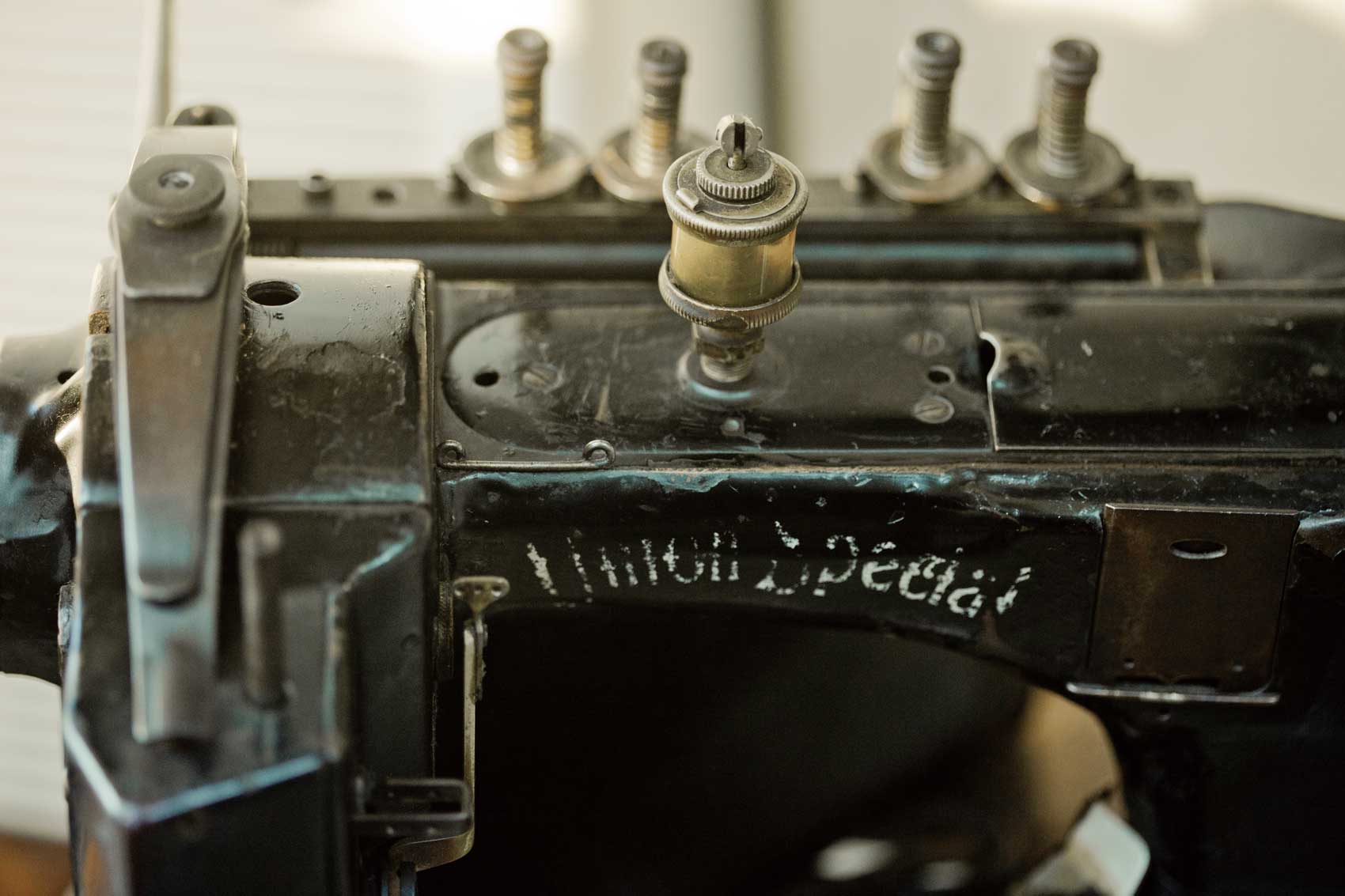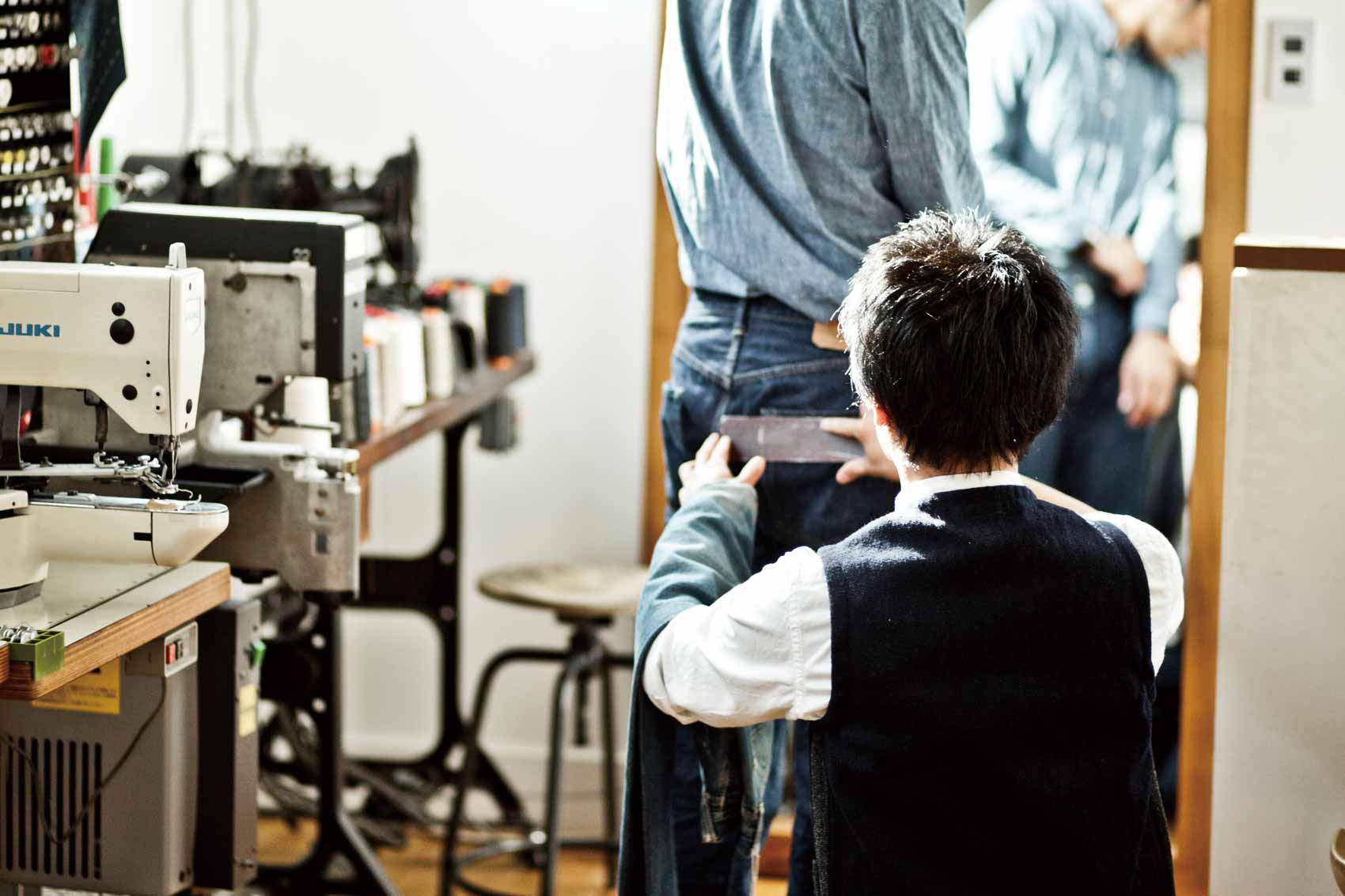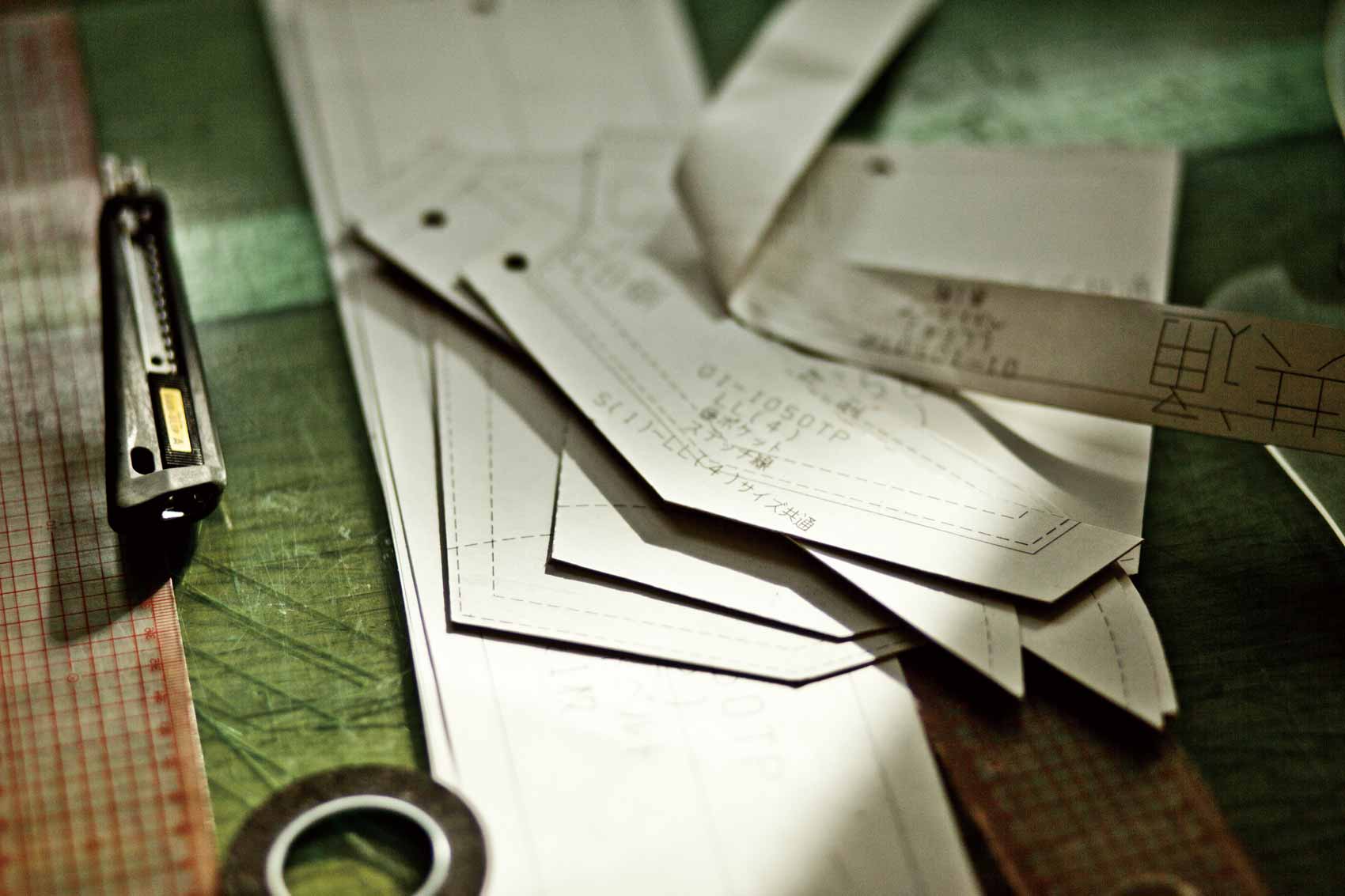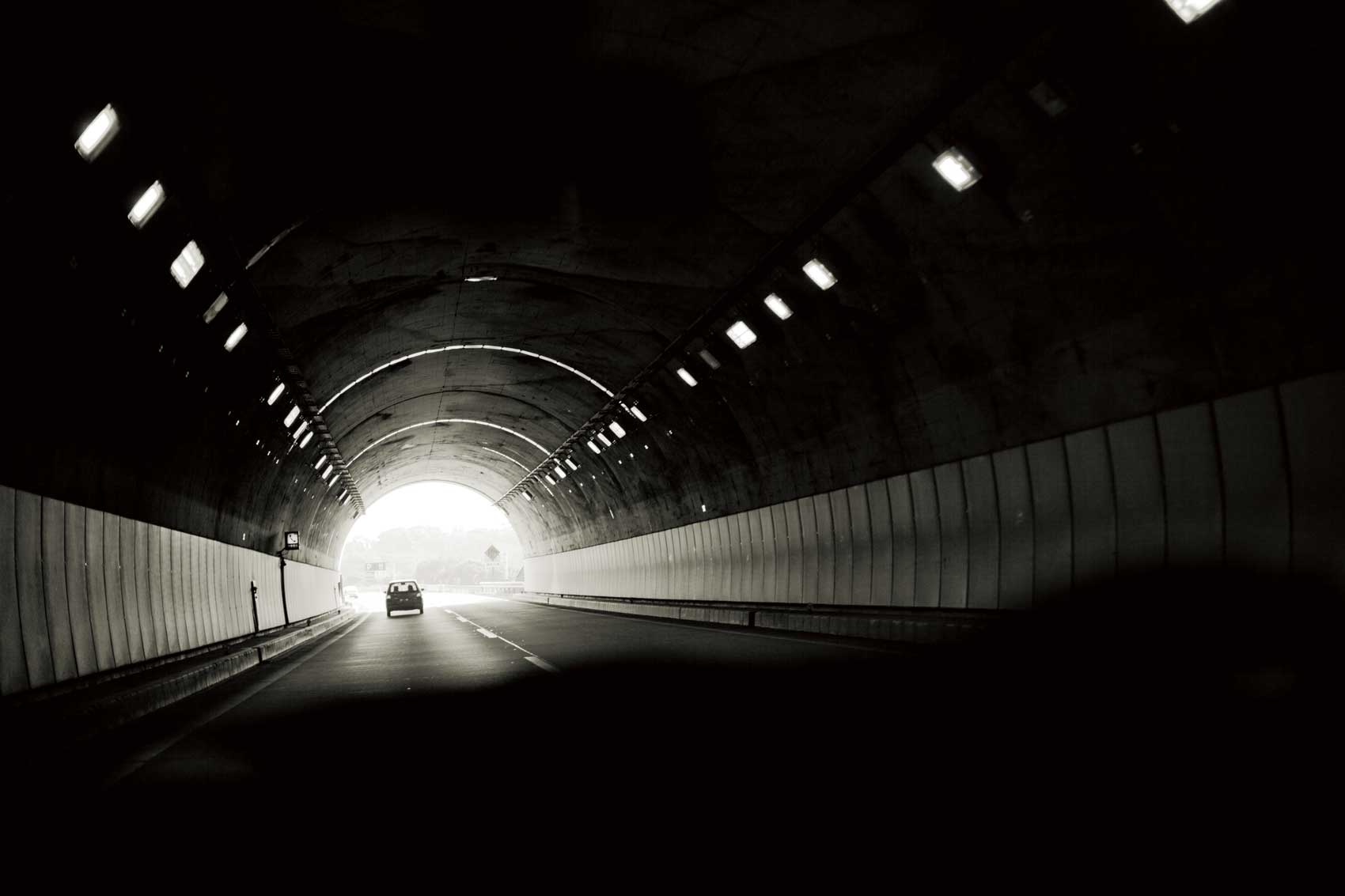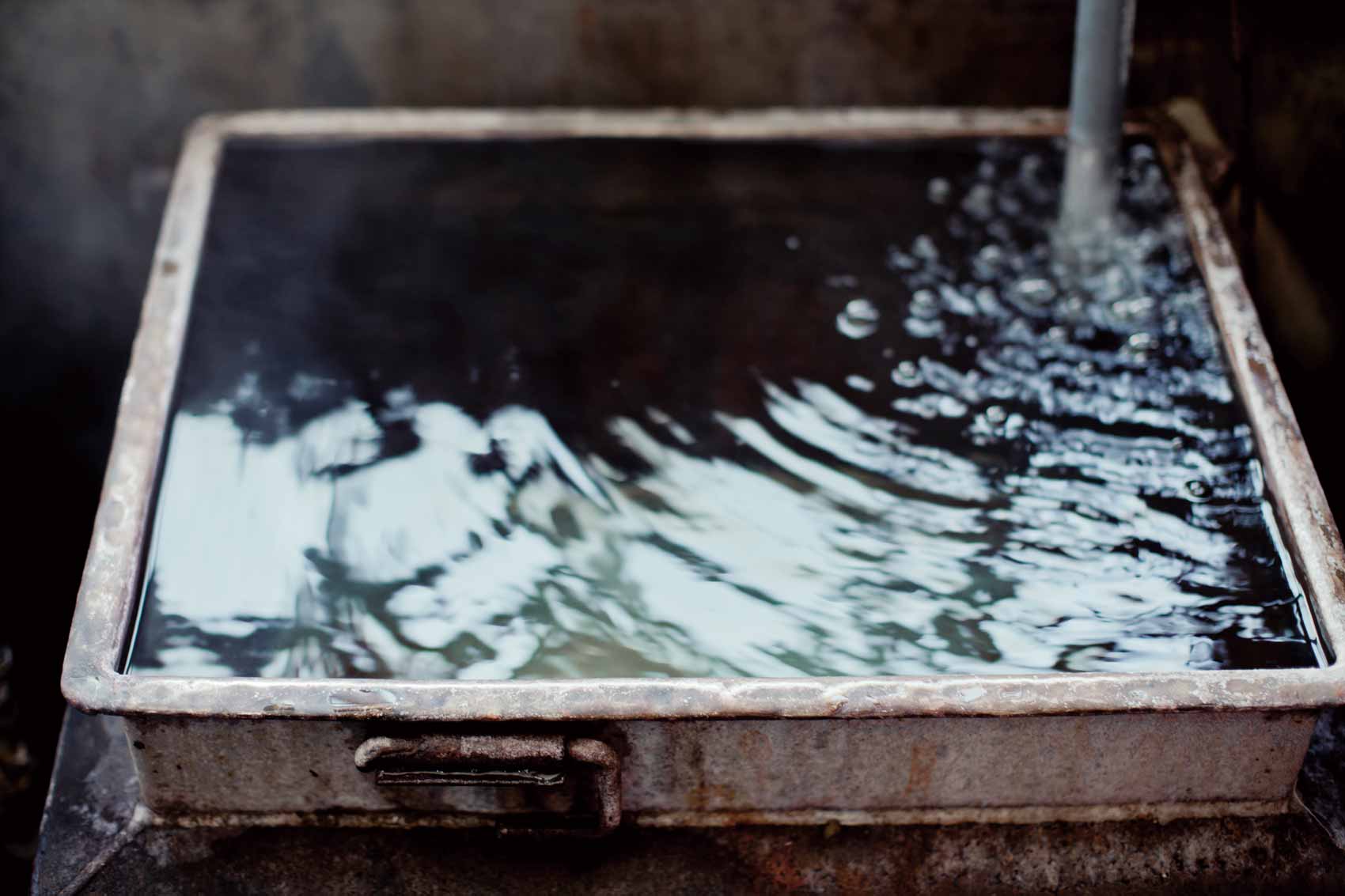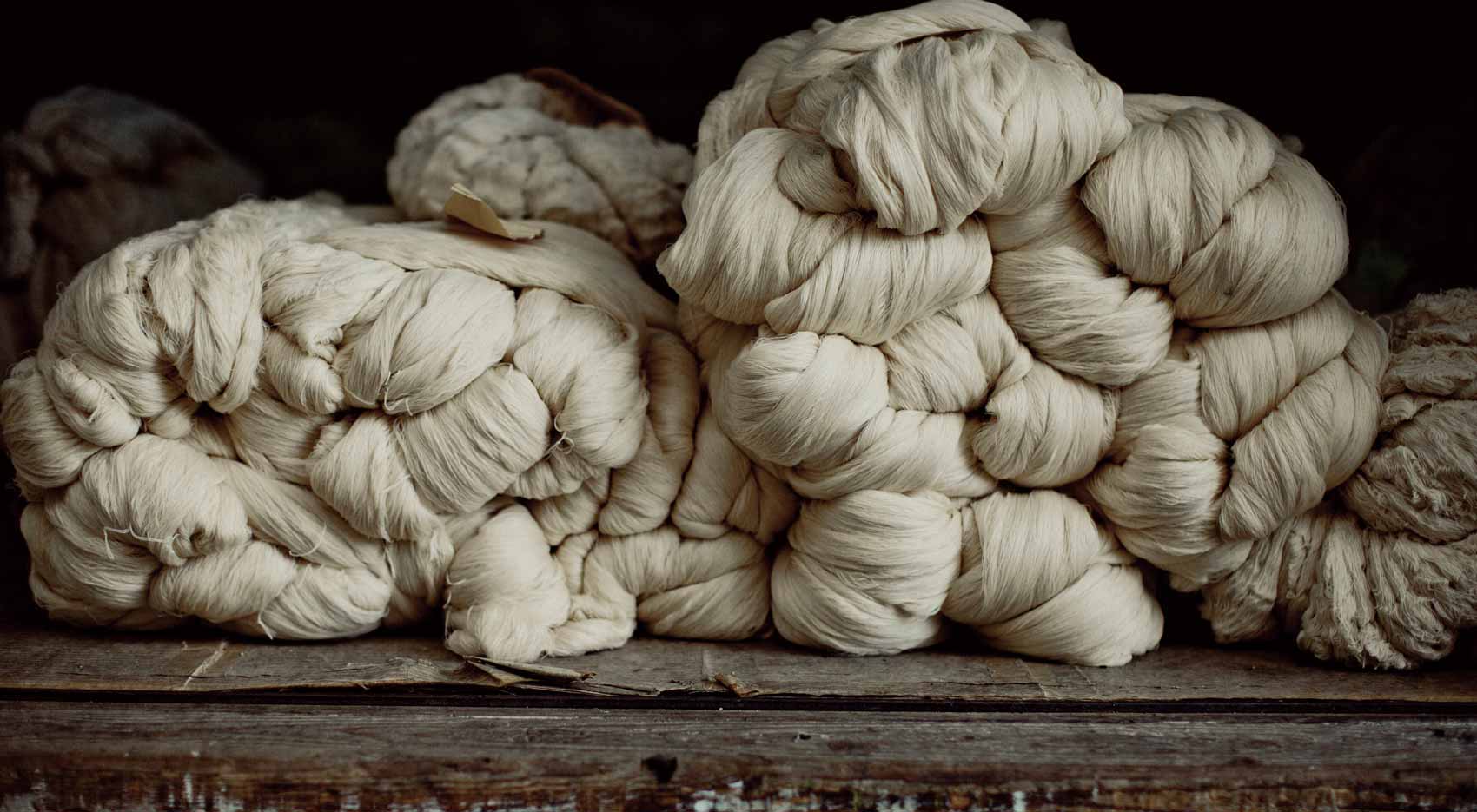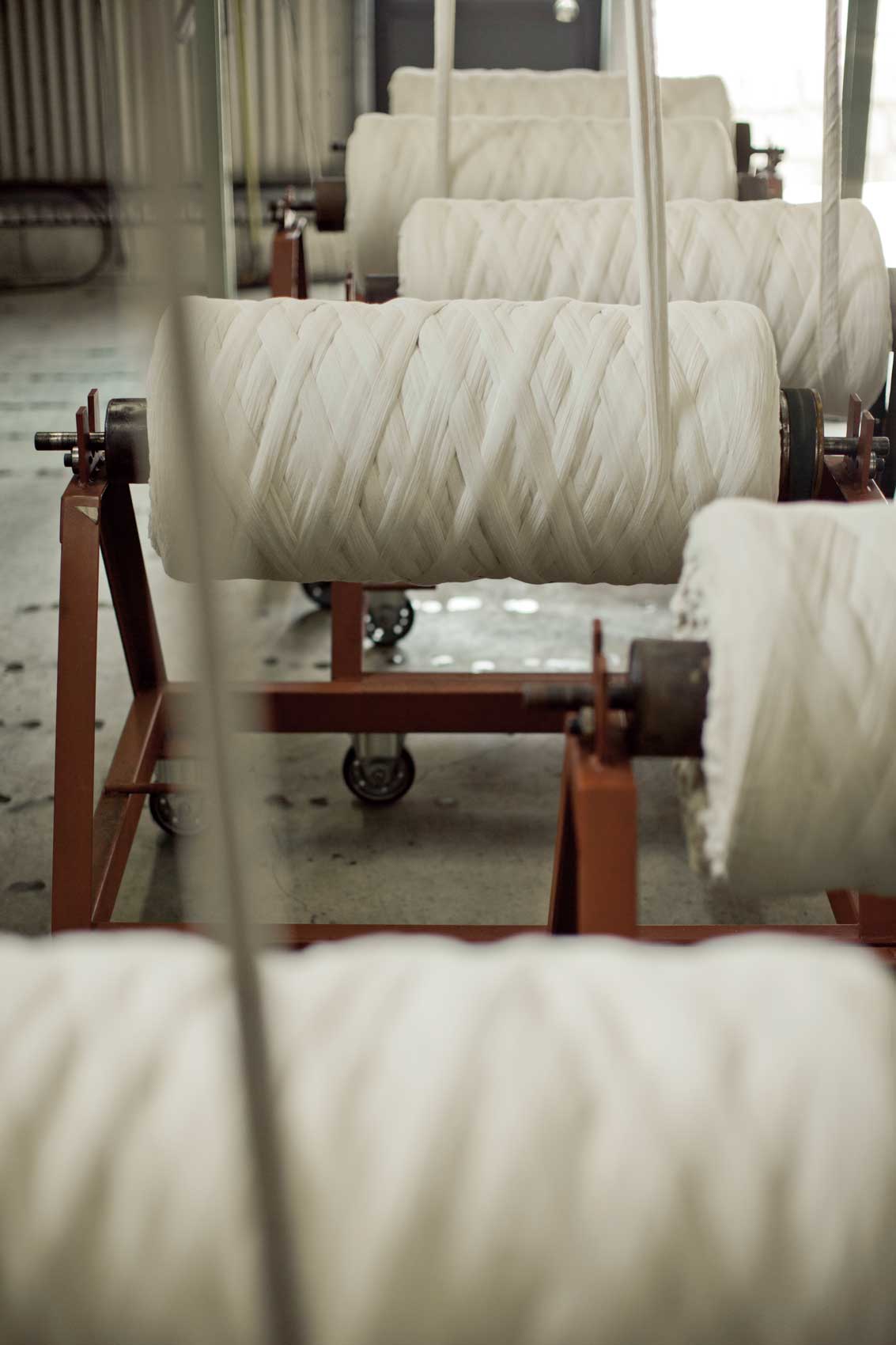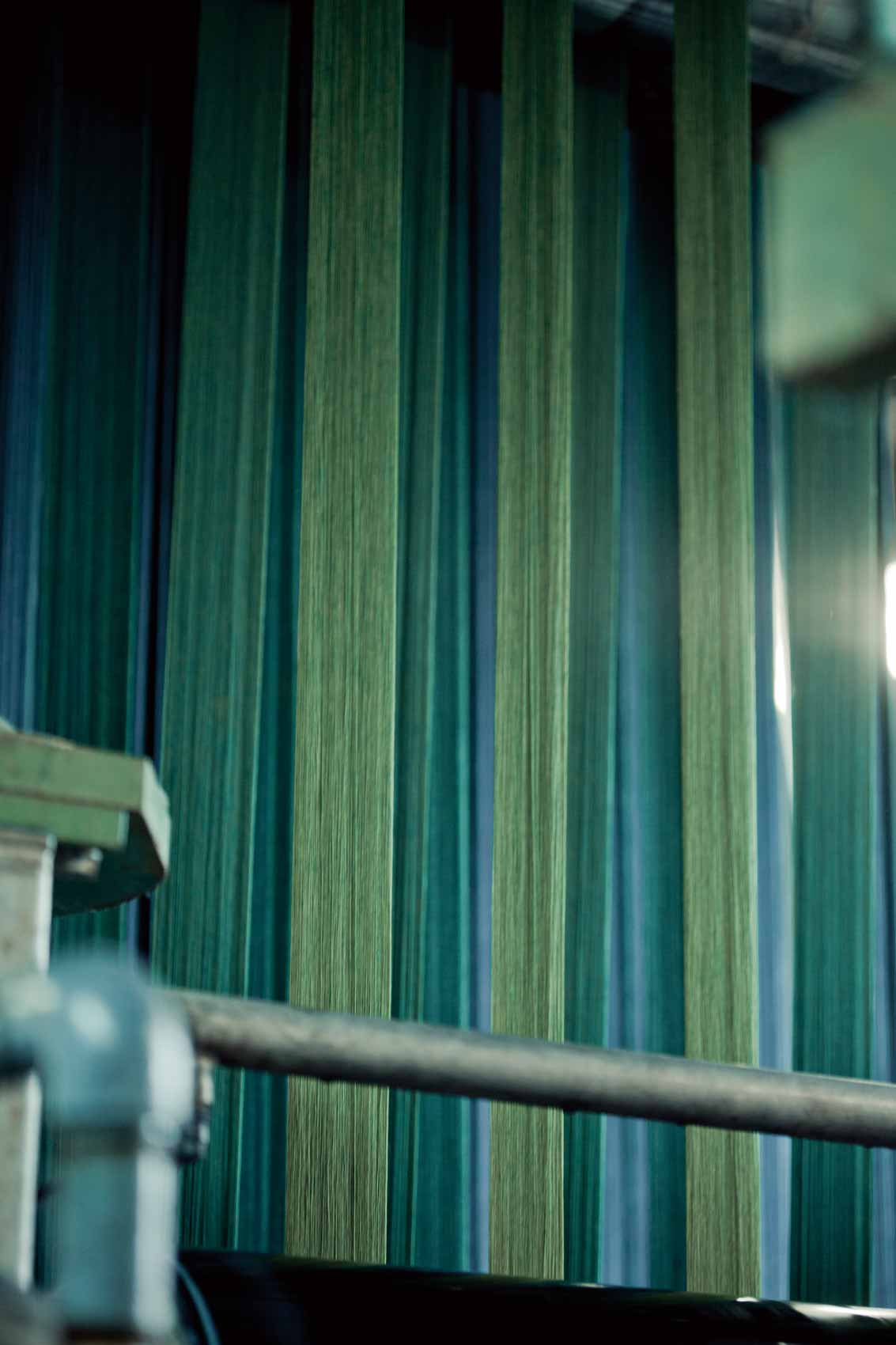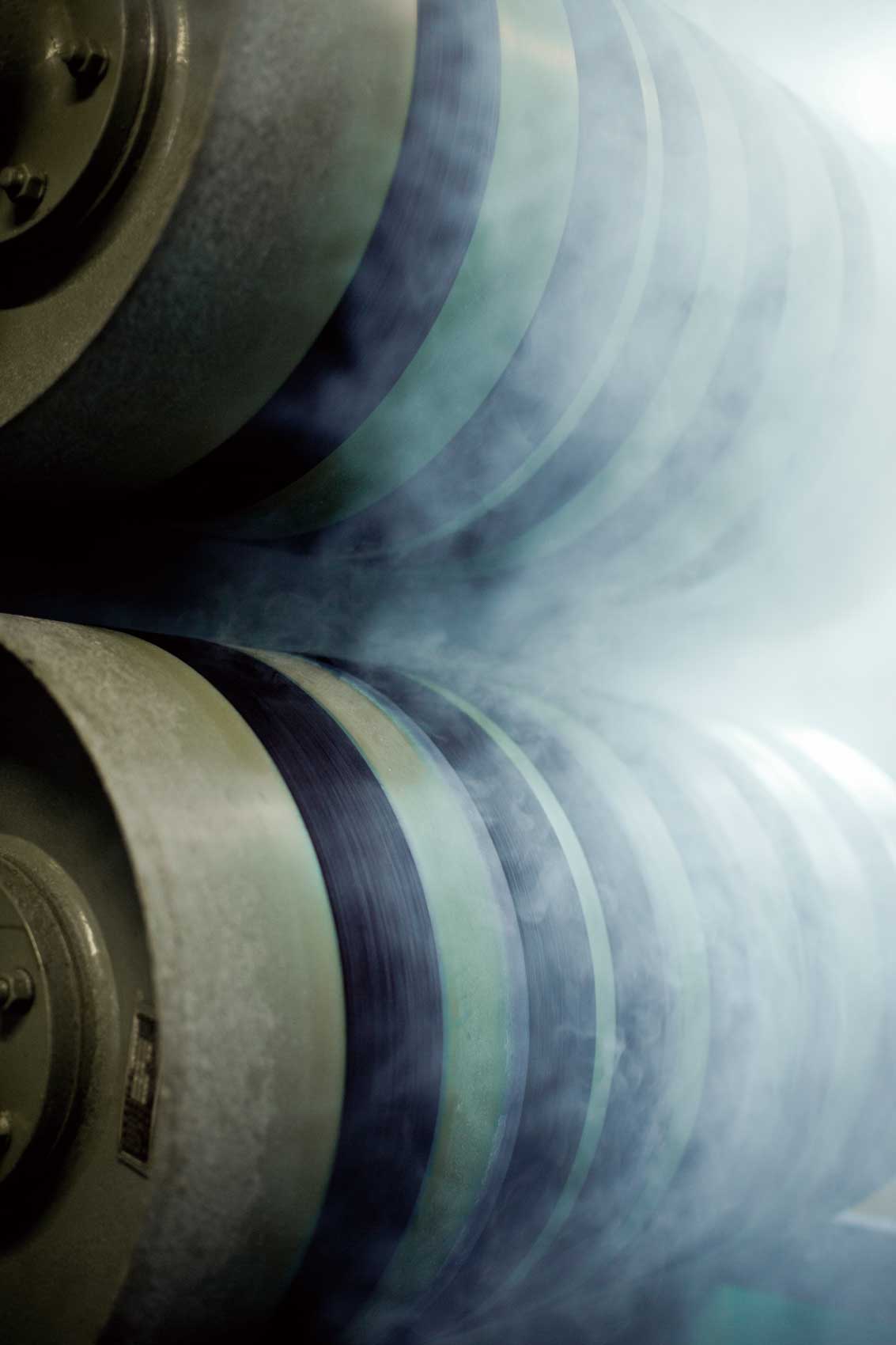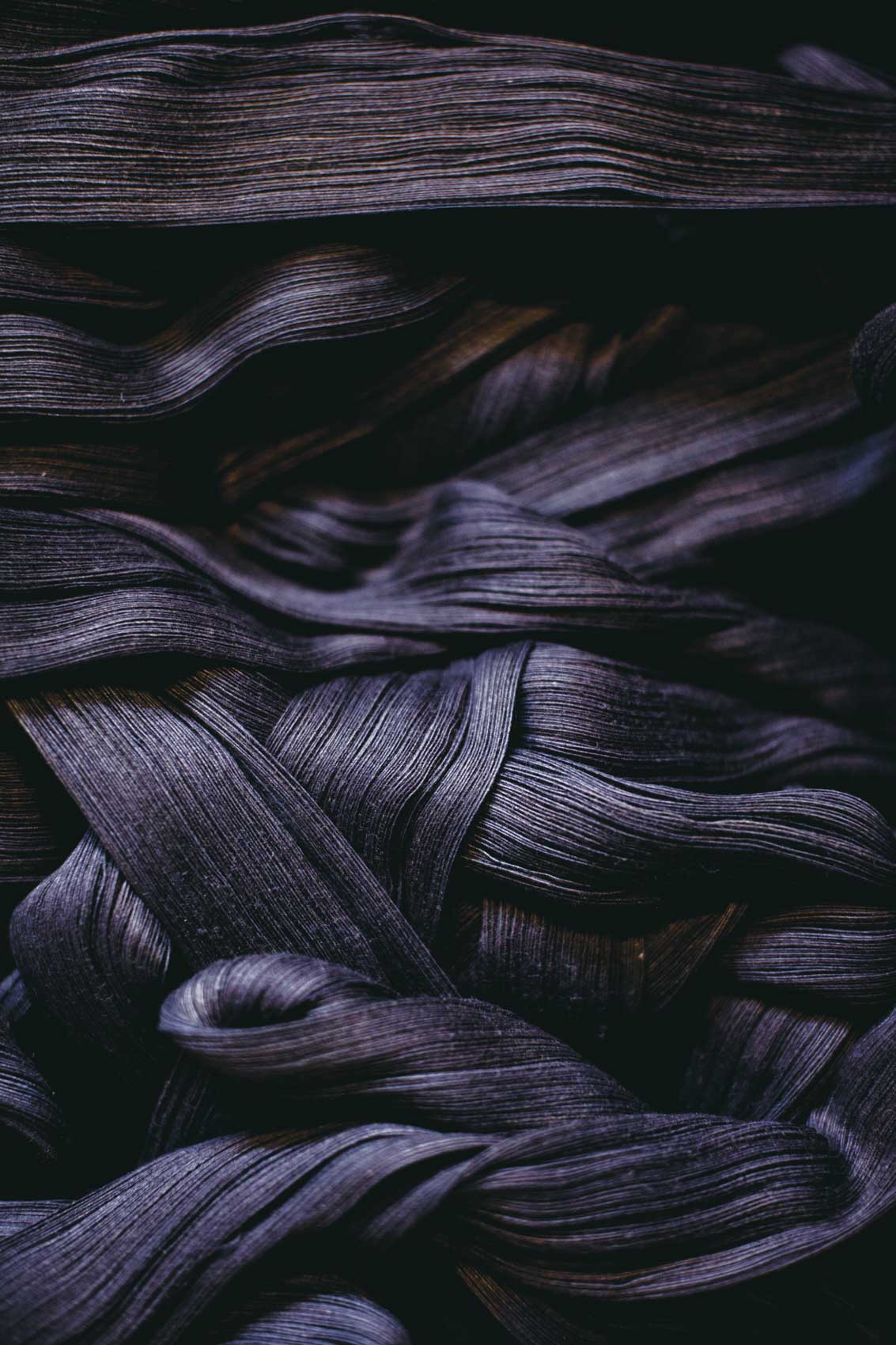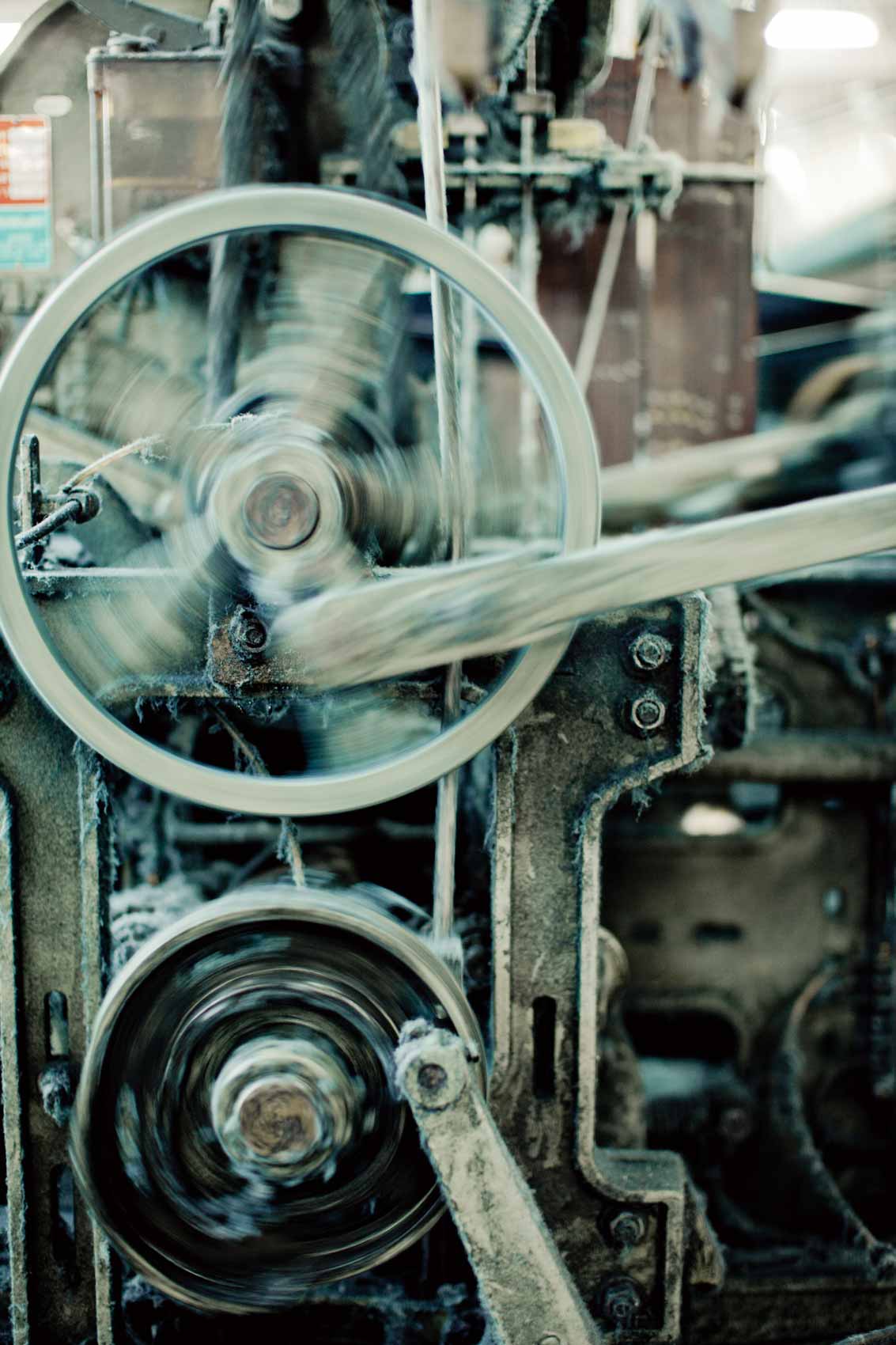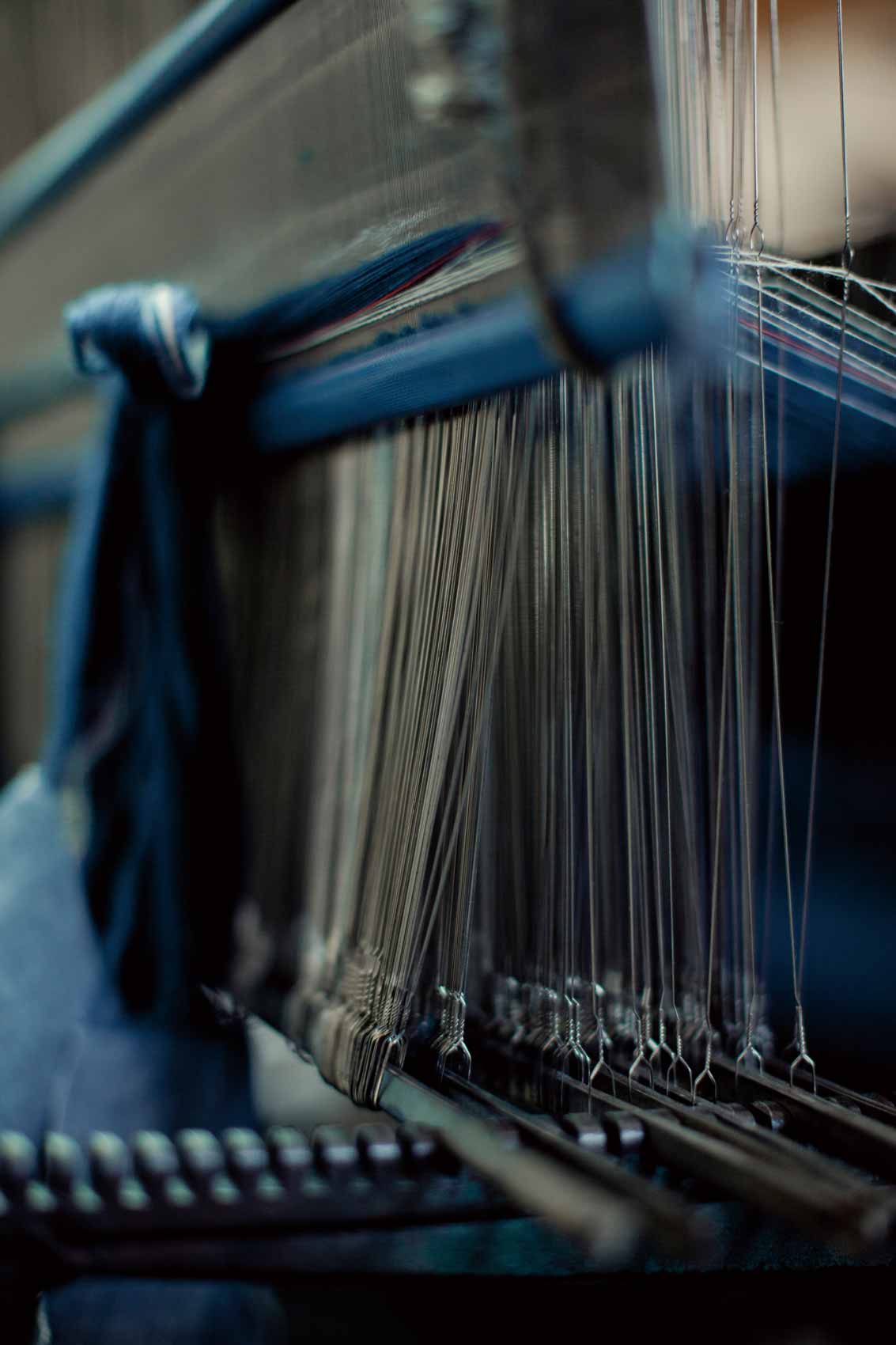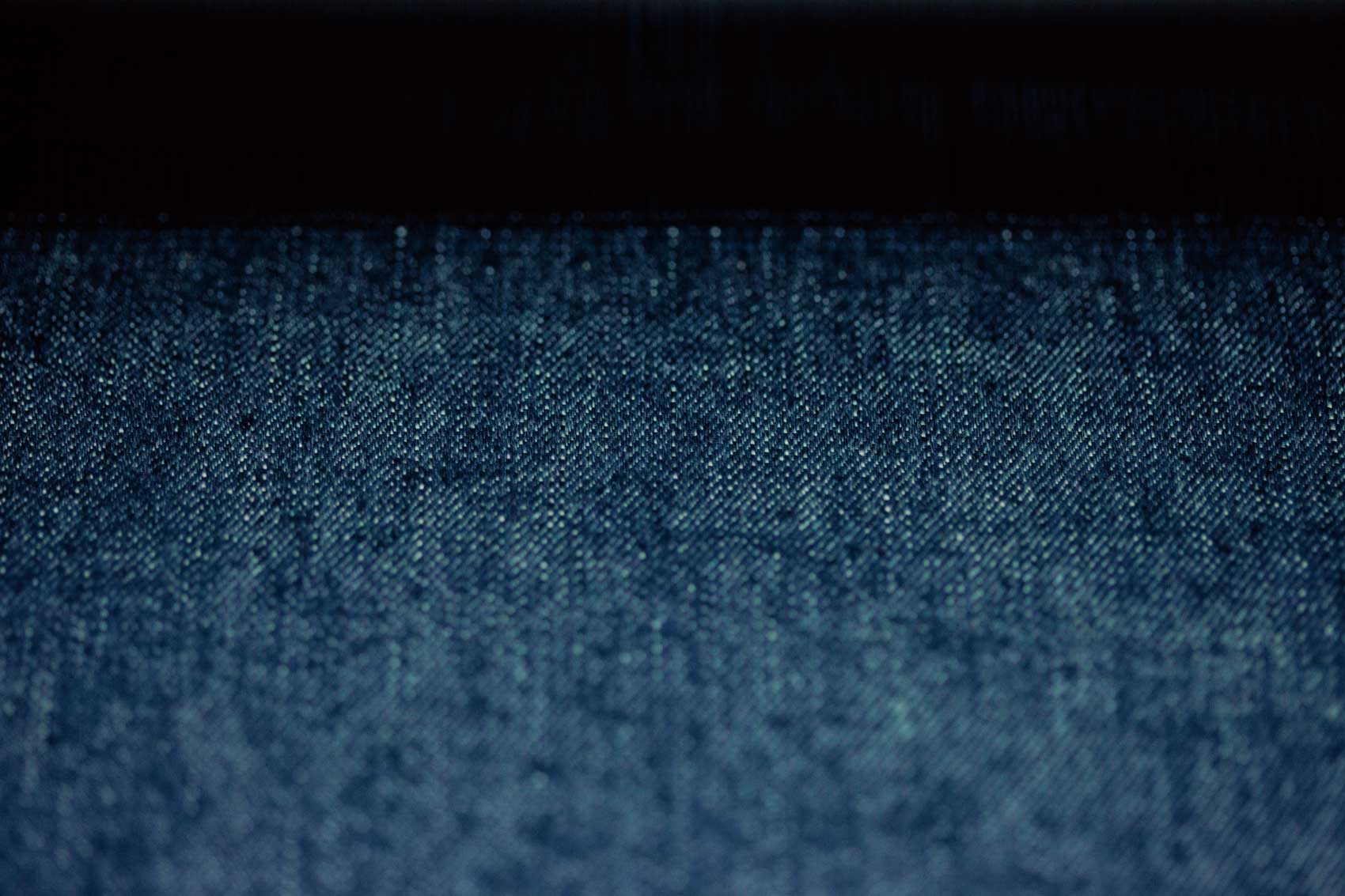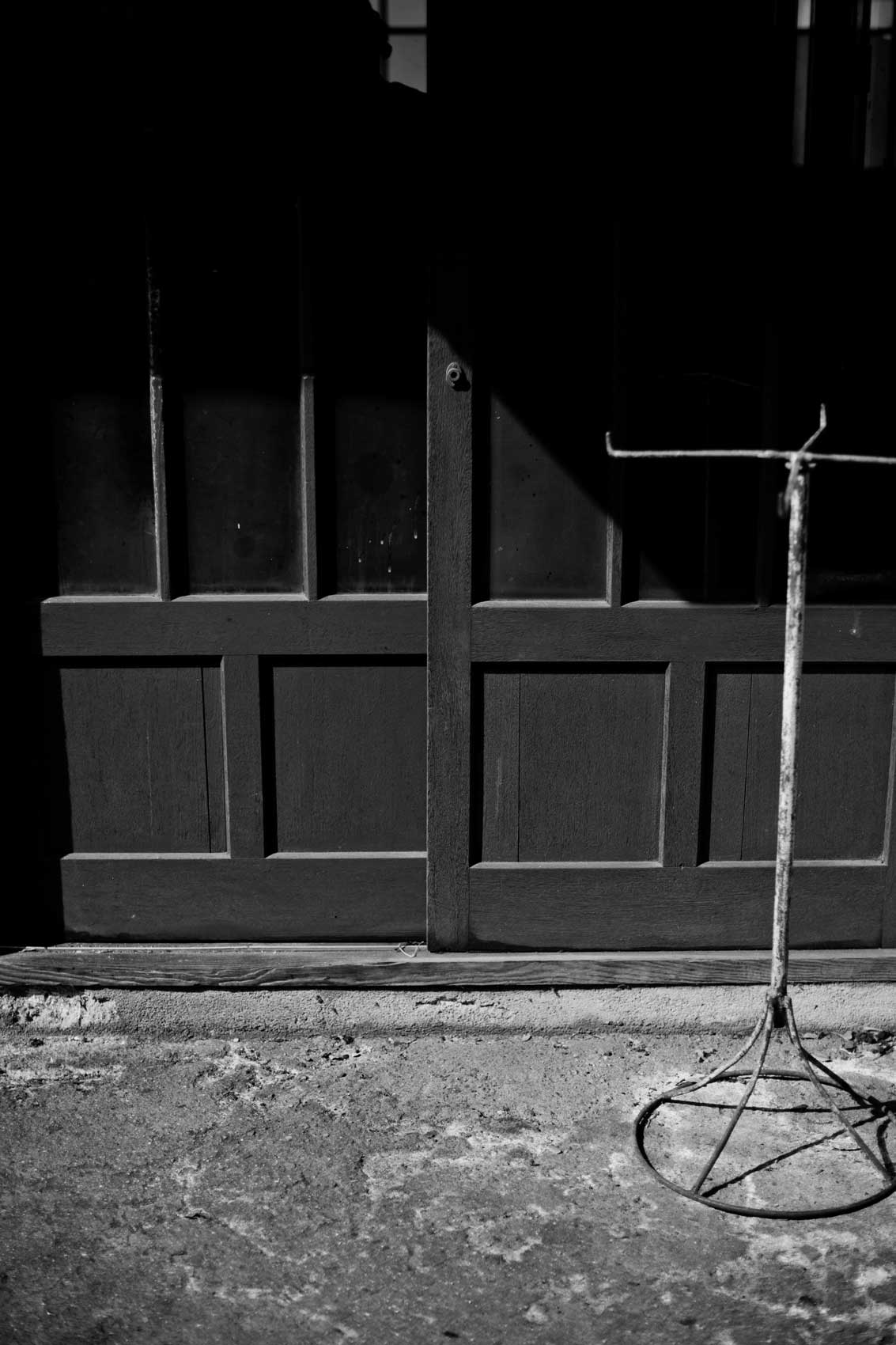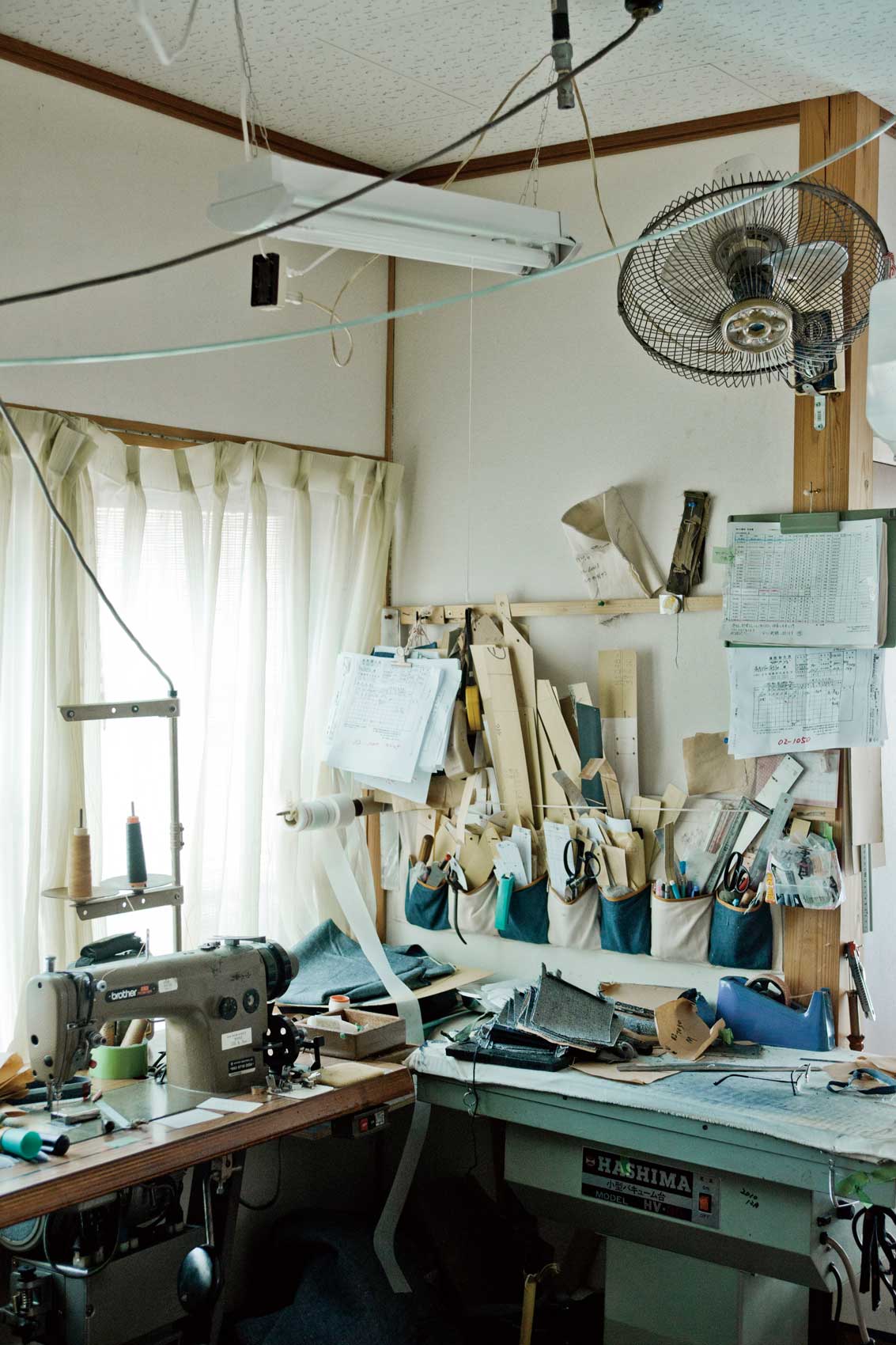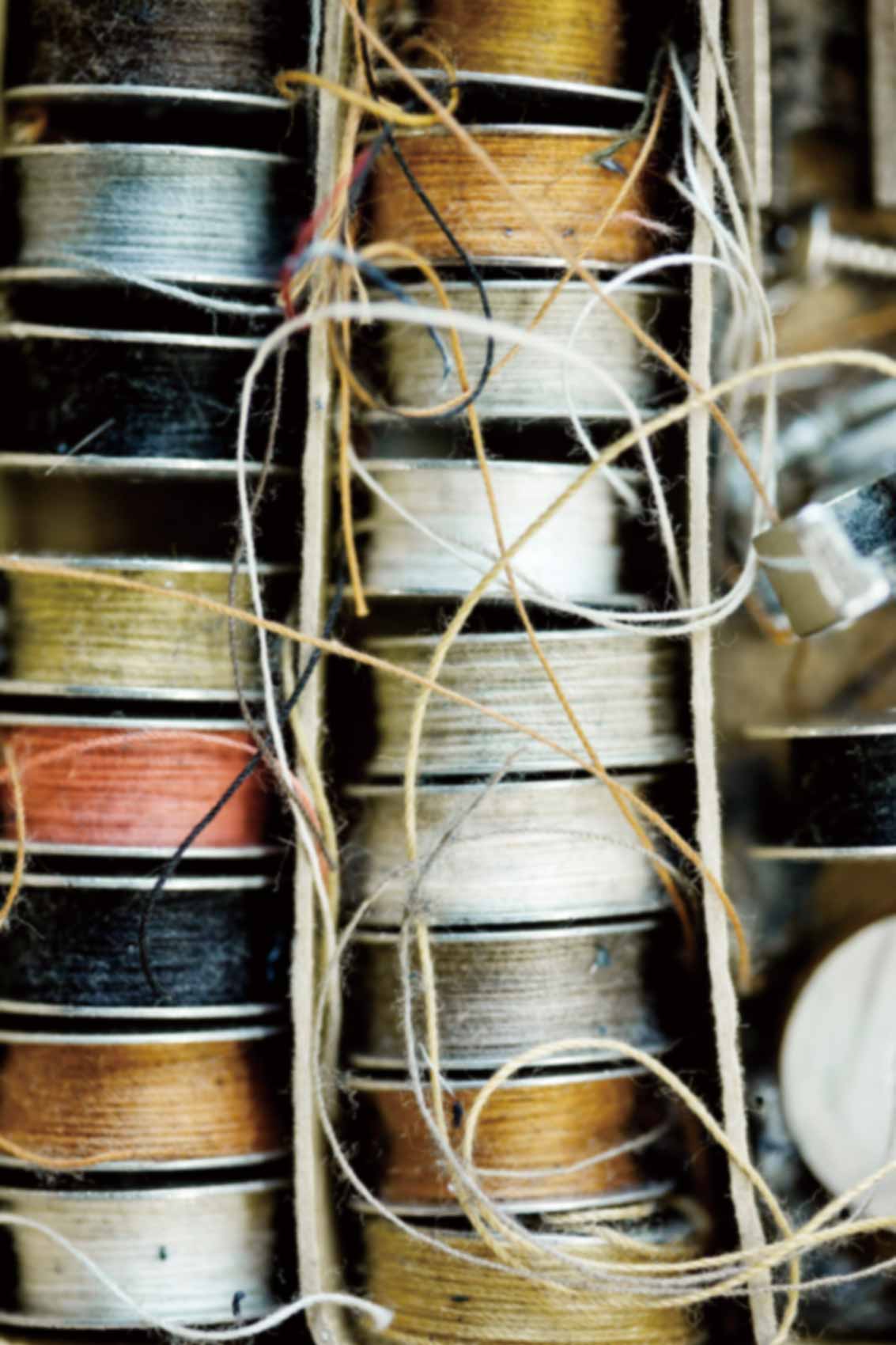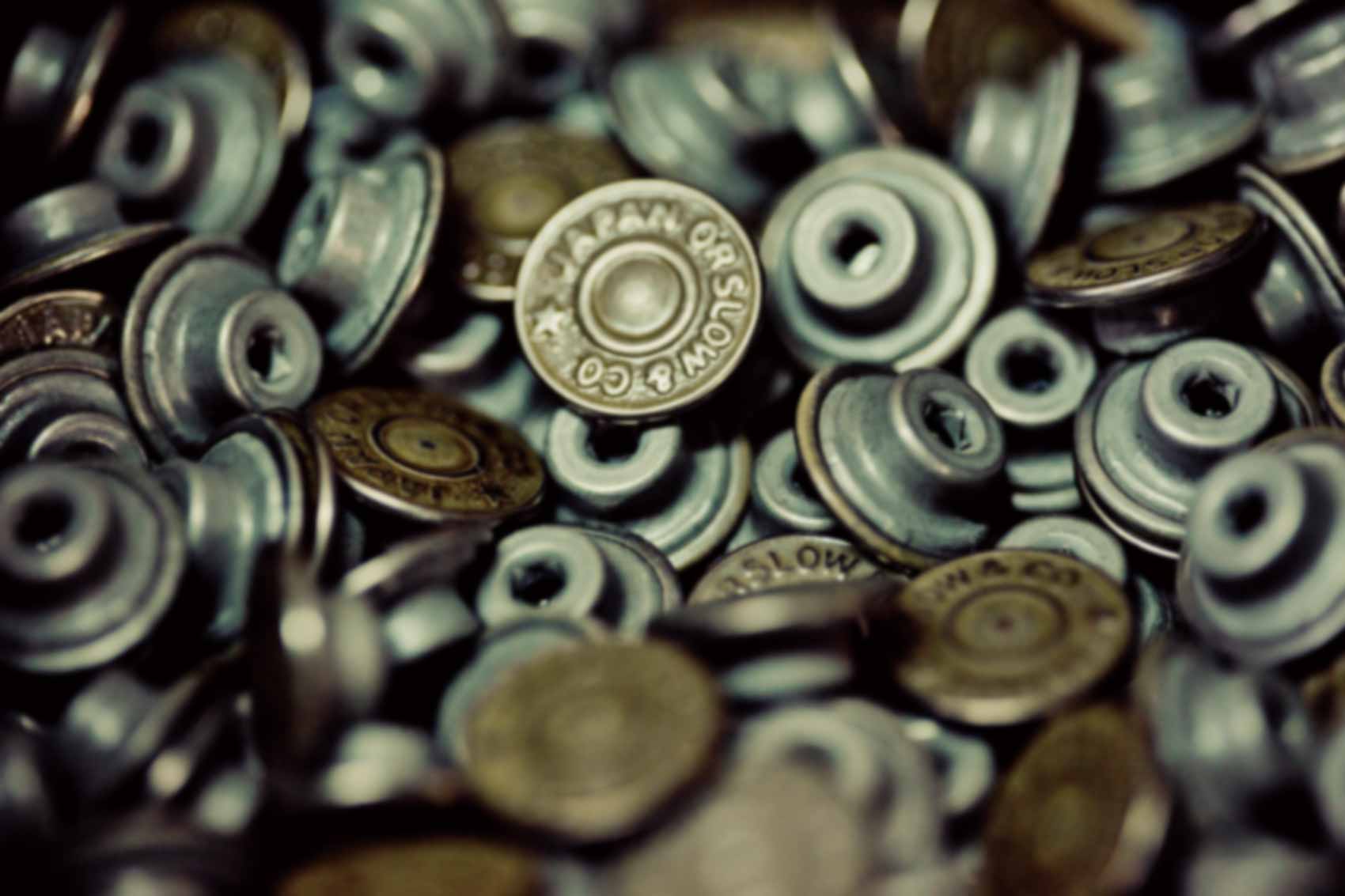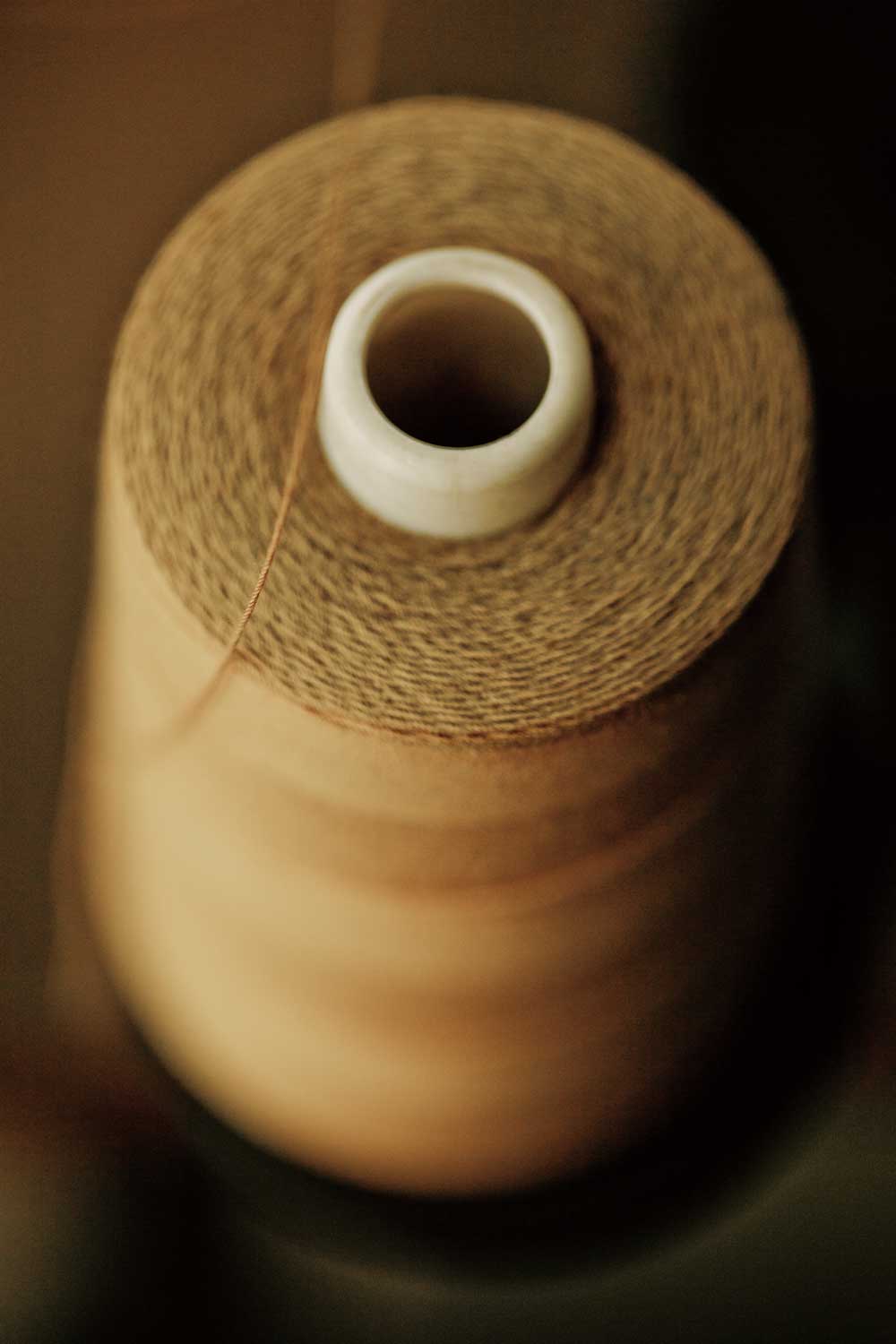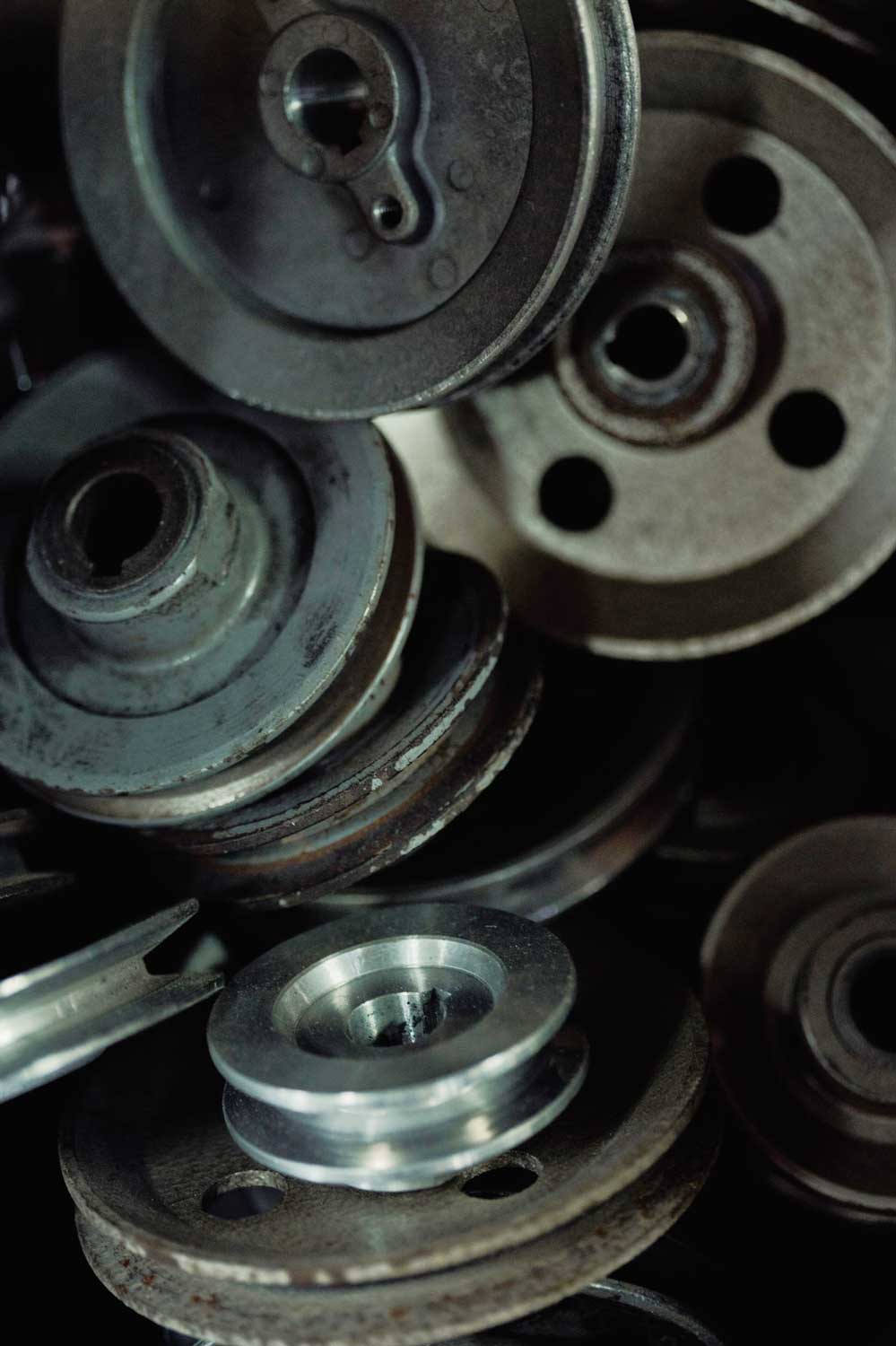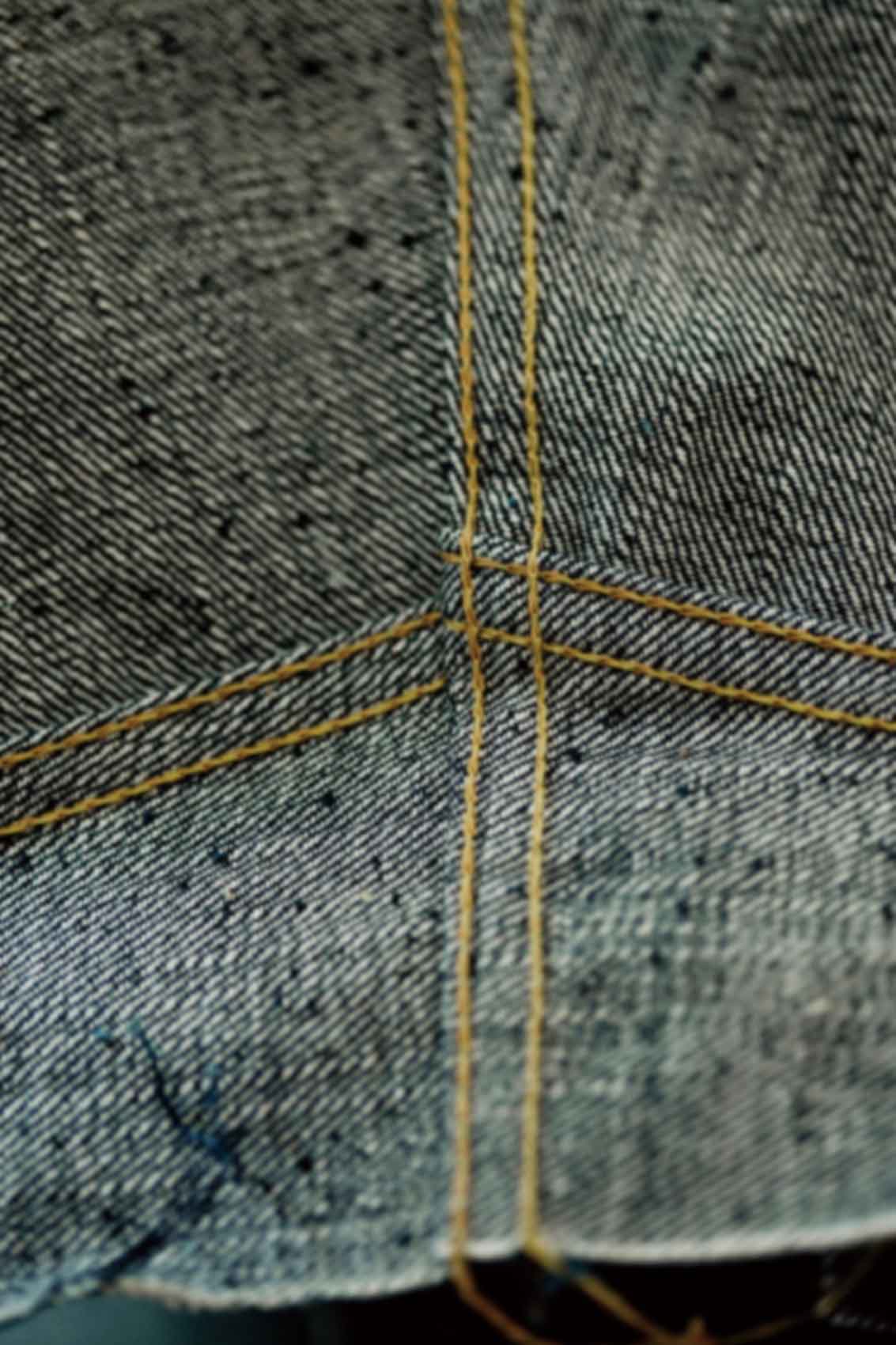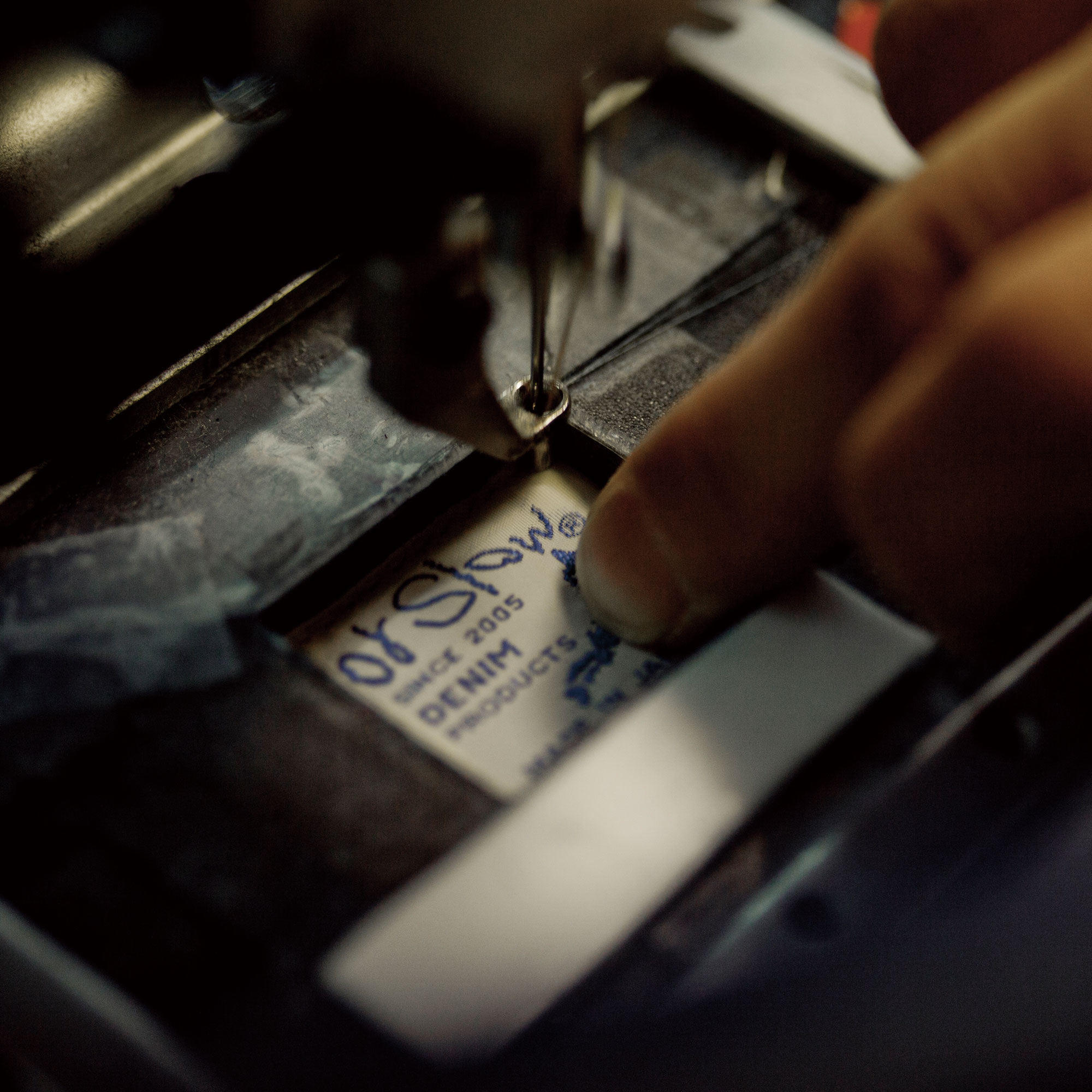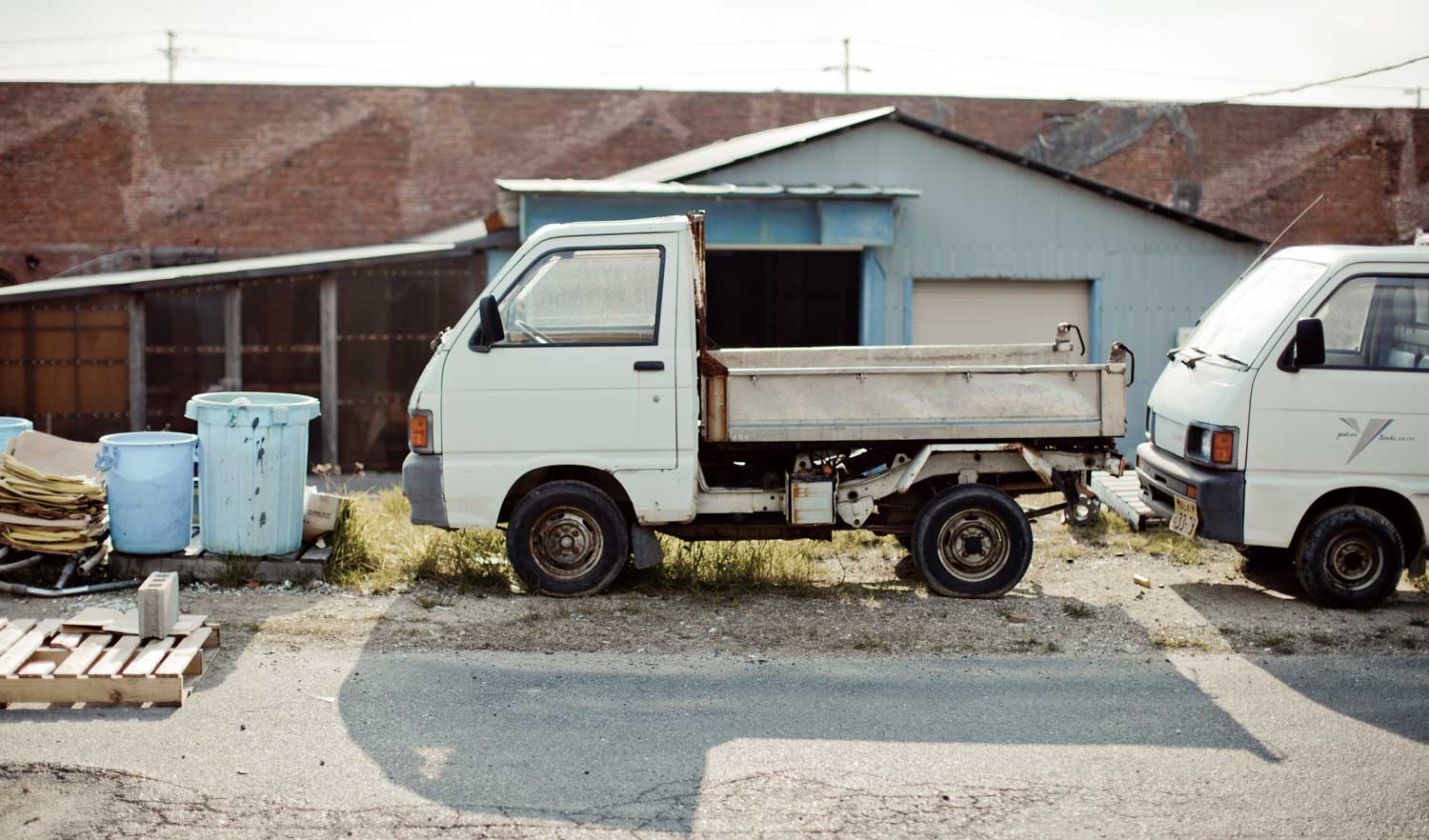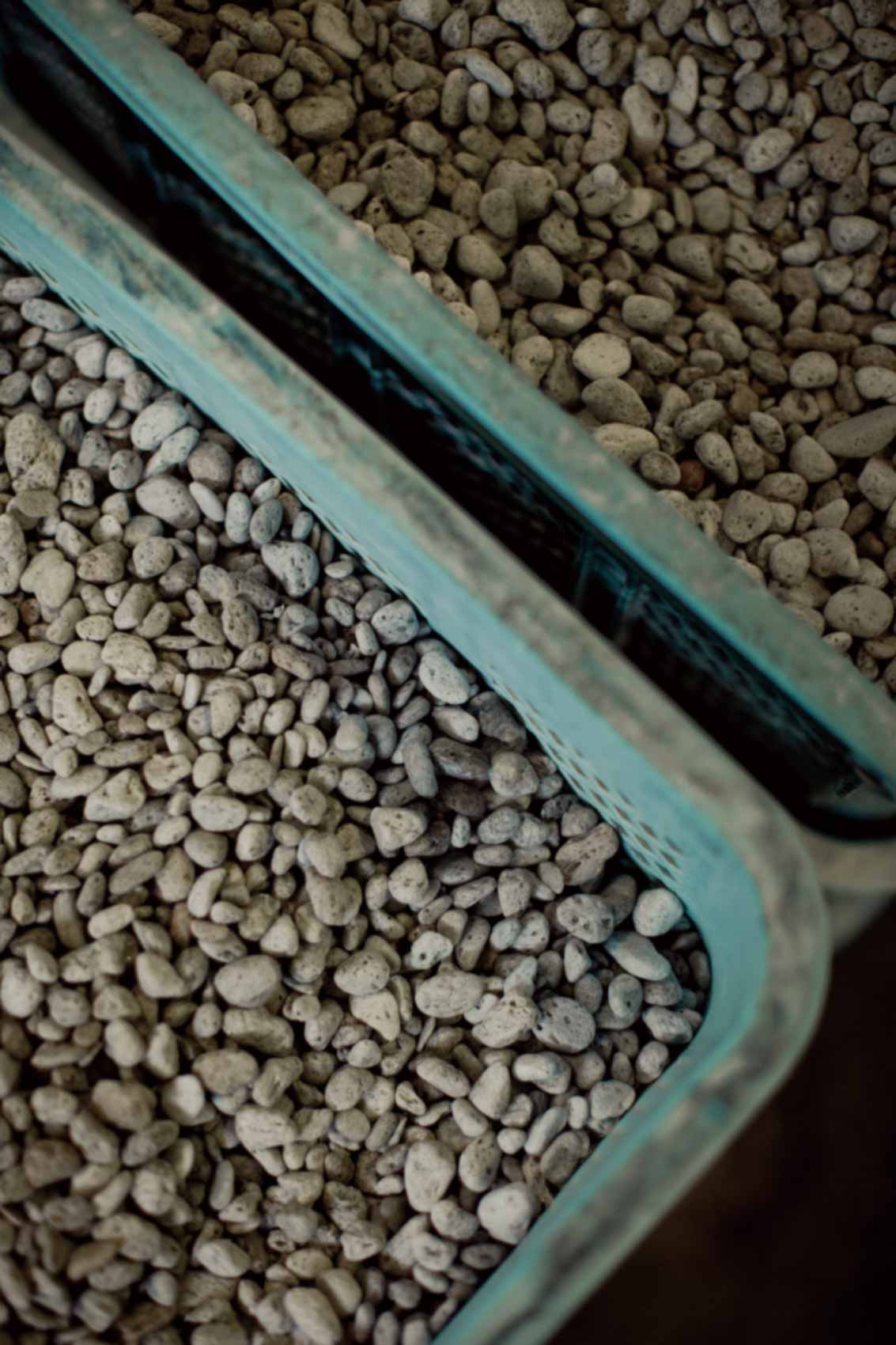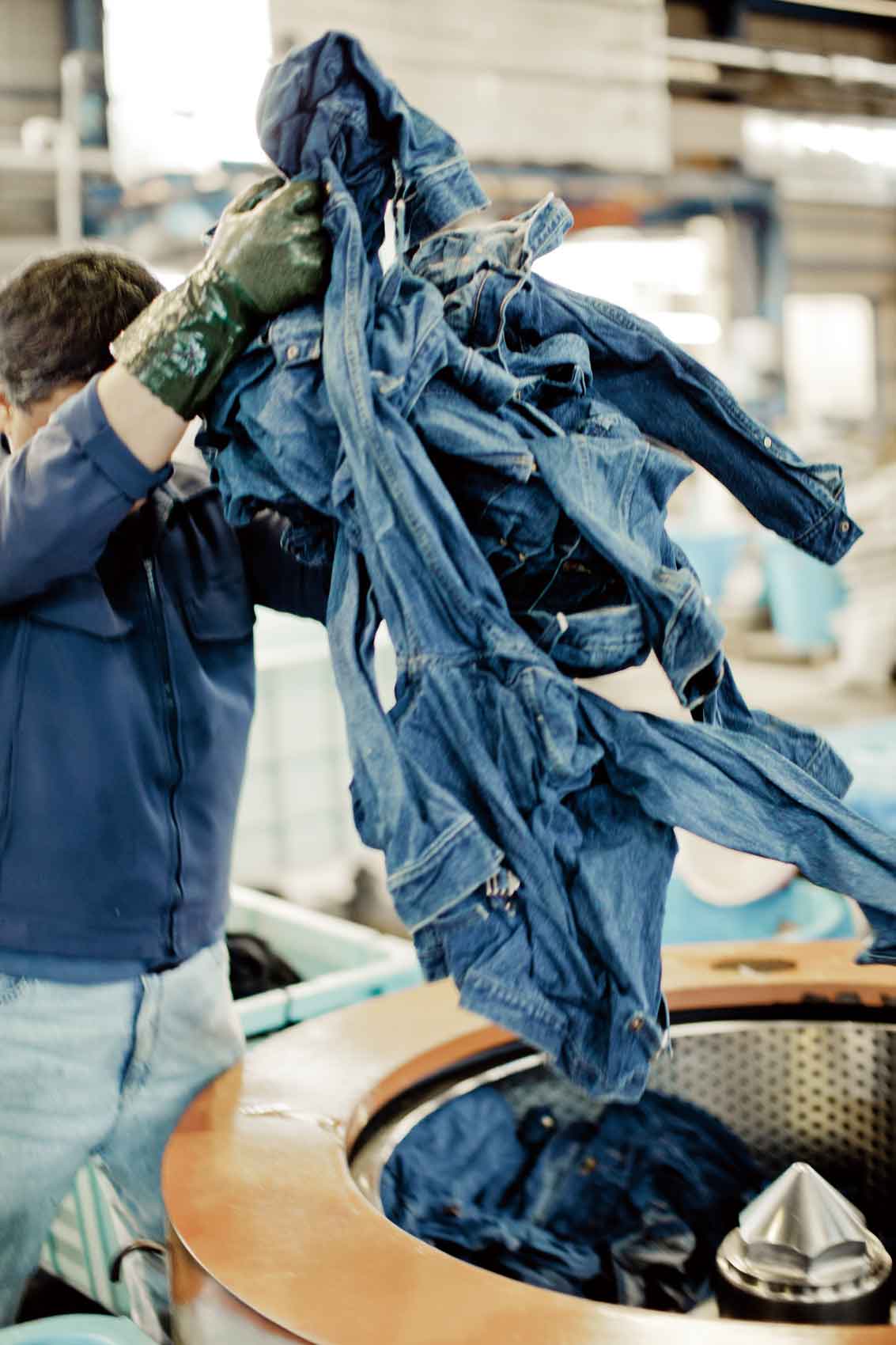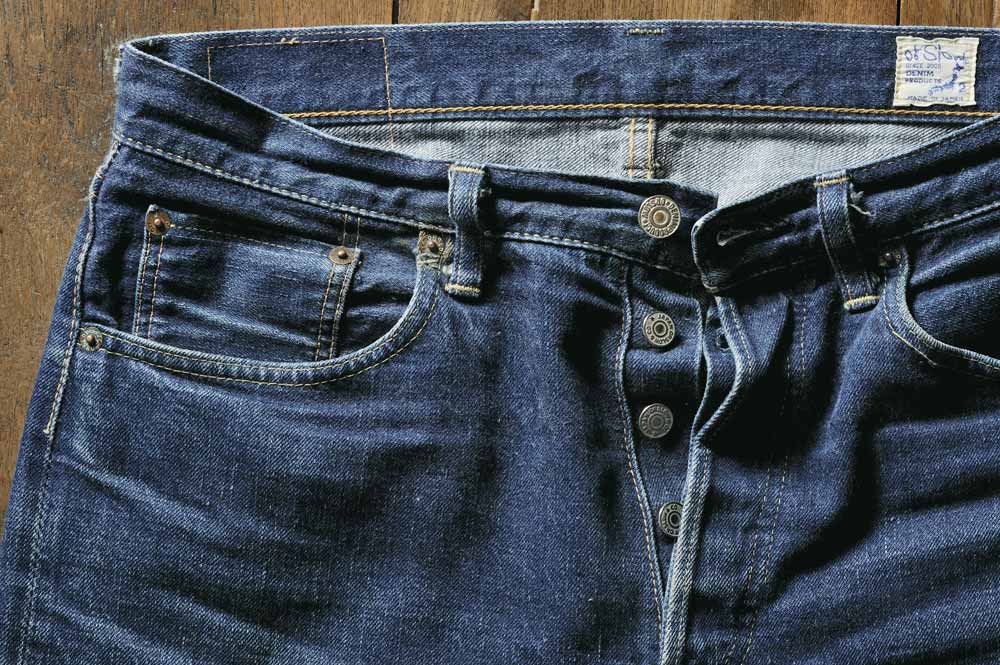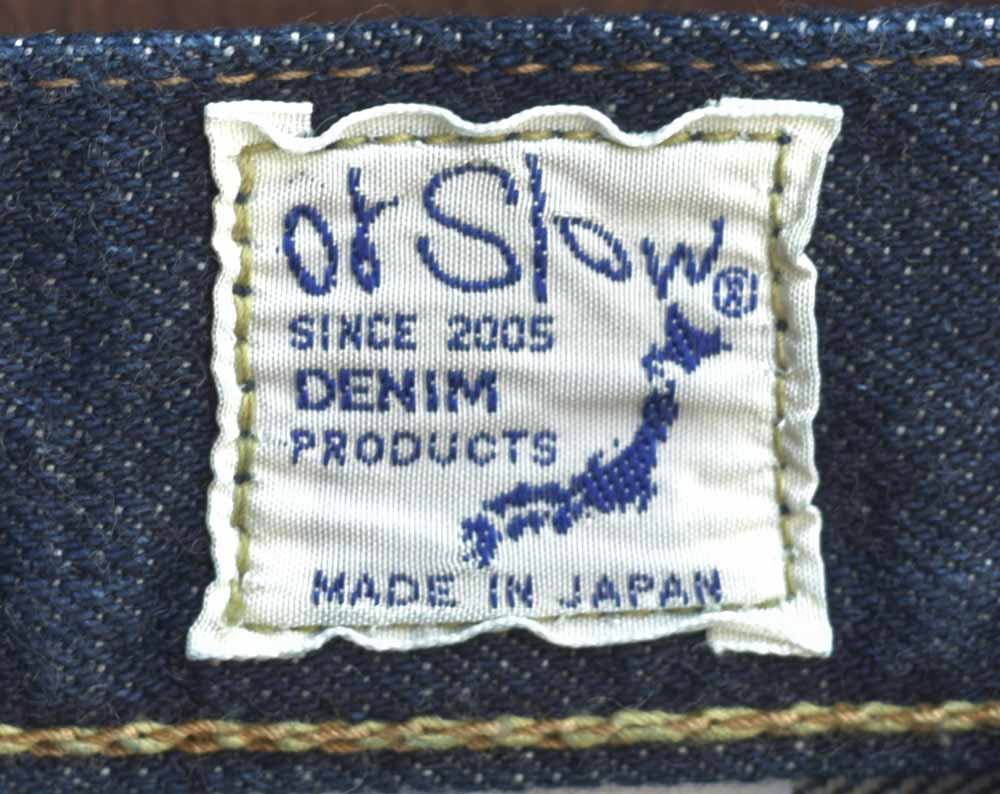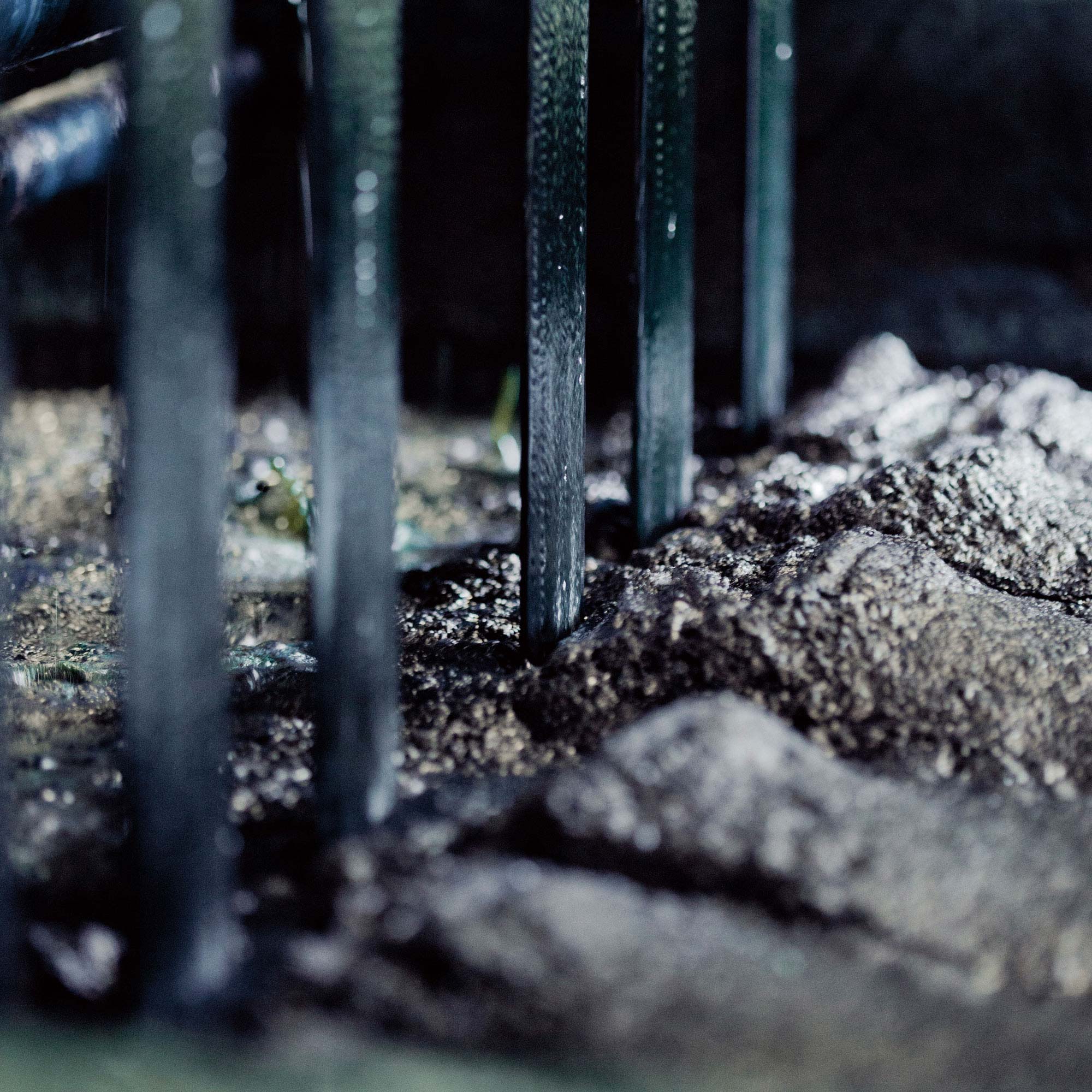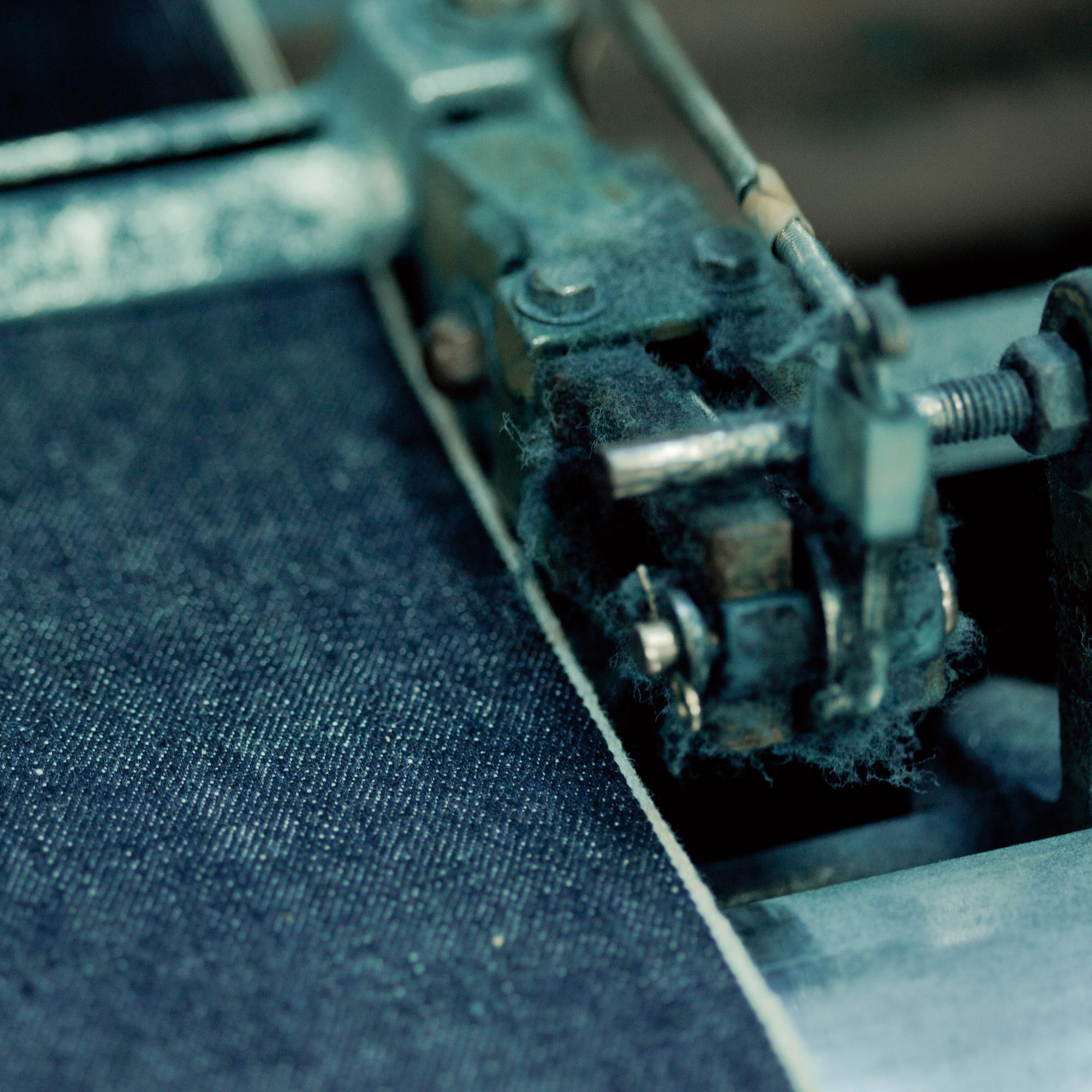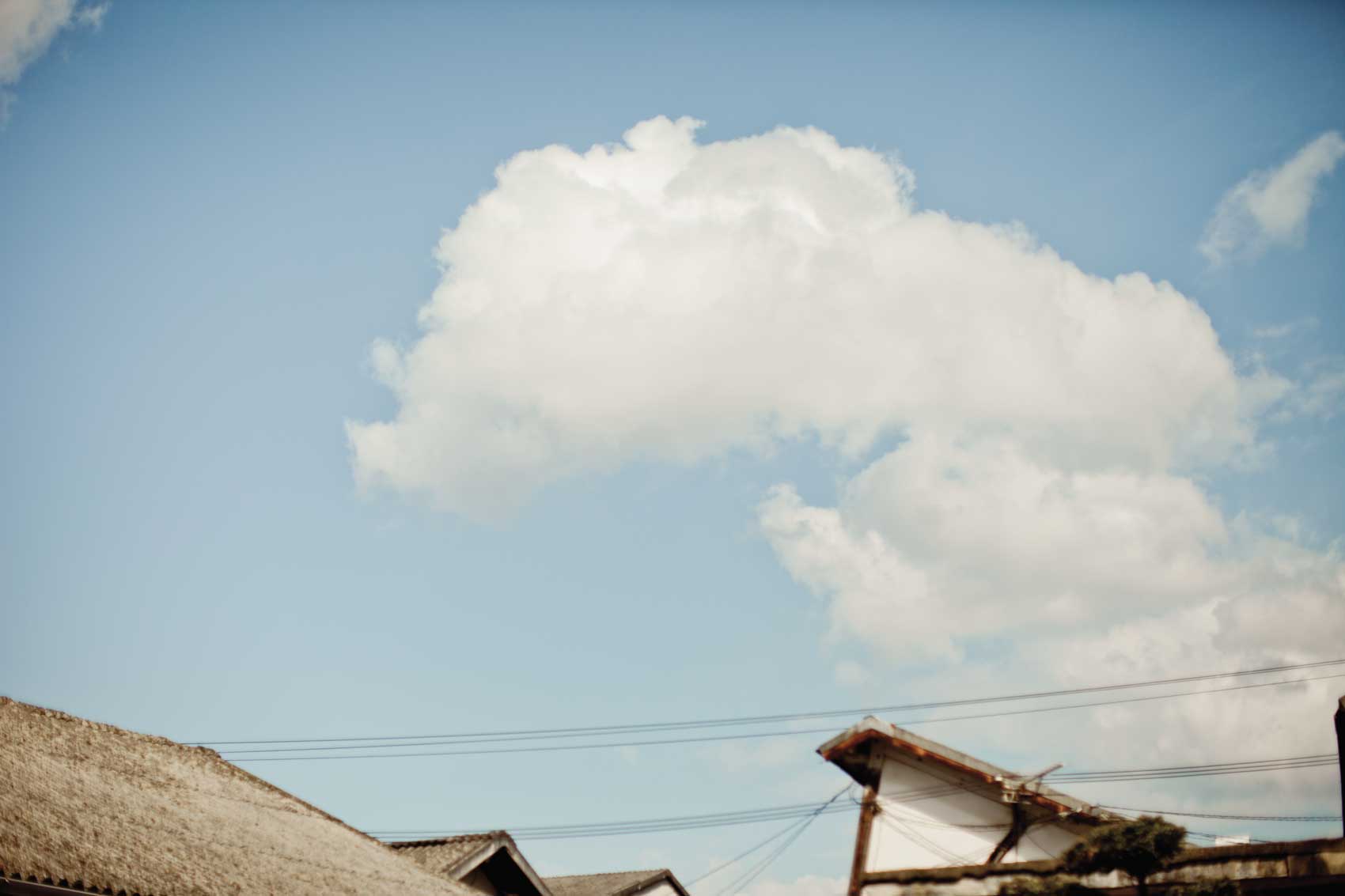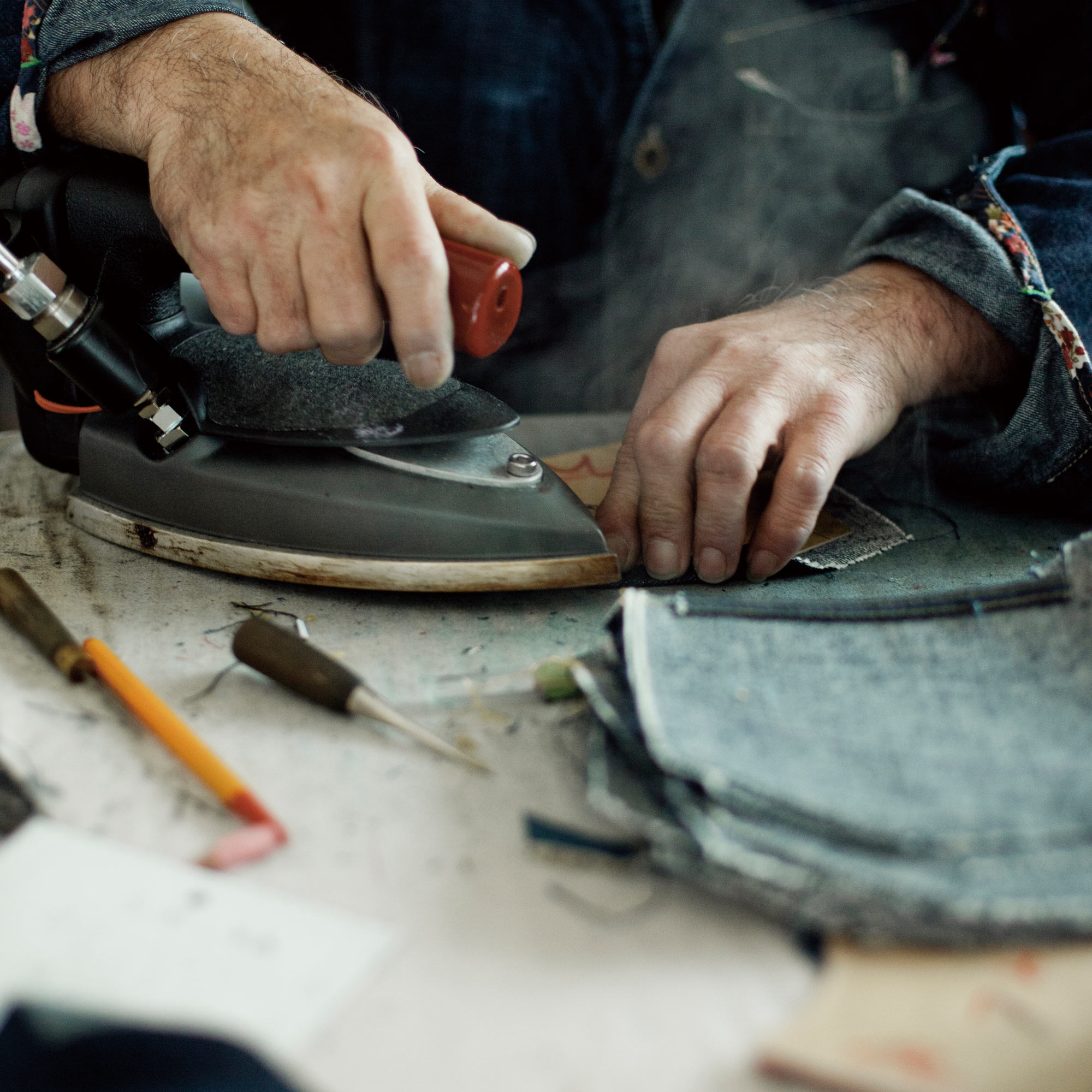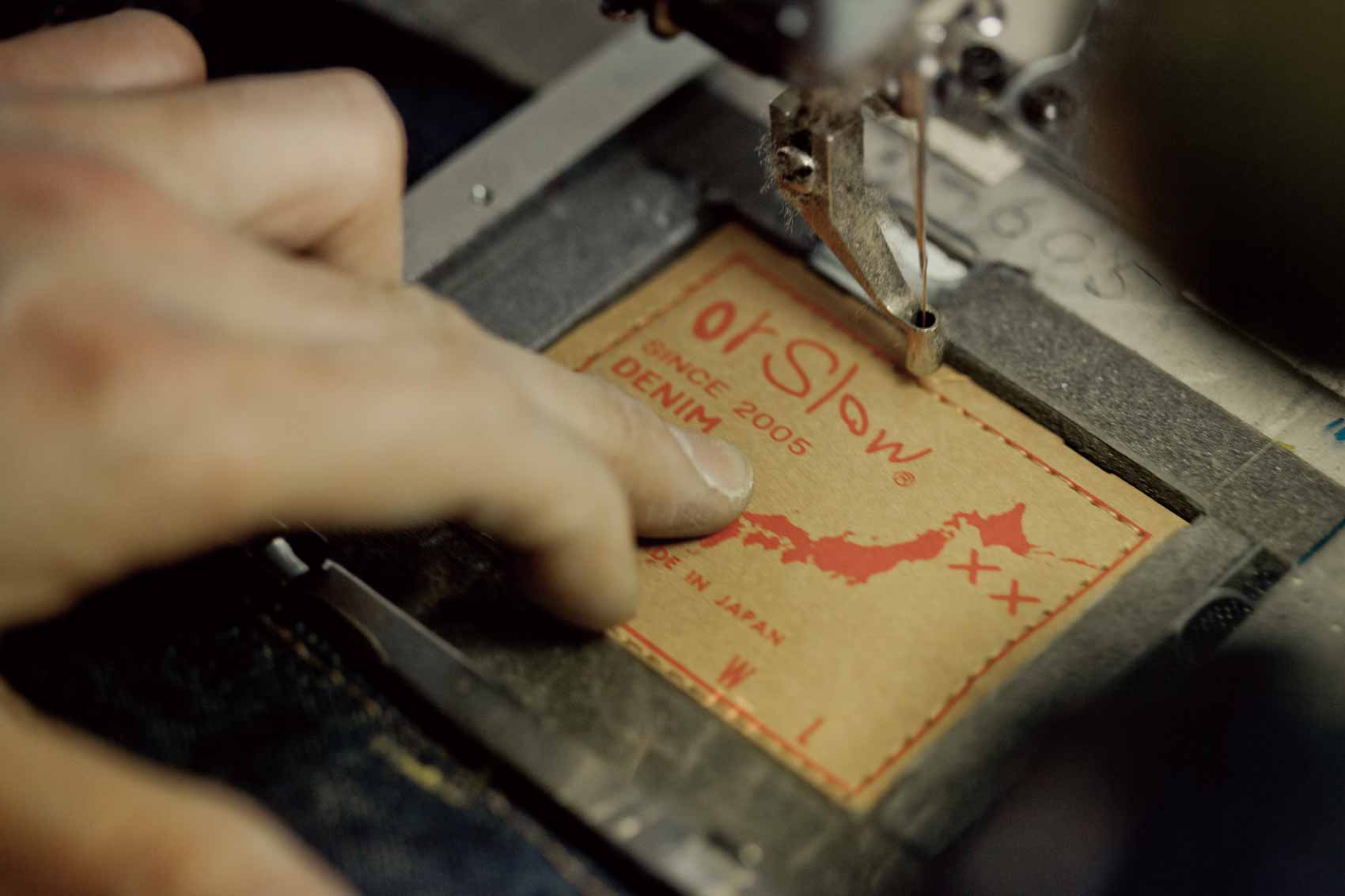幼少のころ買ってもらったデニムのオーバーオール
幼な心ながら、色落ちして表情を変えていくデニムの魅力に心惹かれる。
折しも国産ジーンズ全盛の当時、デニムと言えばワンウォッシュが主流で
加工を施されたジーンズなどは、まだまだ存在することはなく
ジーンズの経年変化を『楽しむ』という感覚は人々の中にはない時代だった。
その後、カラーパンツやペダルスリム、ケミカルウオッシュ等のジーンズが流行すると
ジーンズはファッションアイテムとしてより洗練されていくことになる。
幼少に感じたジーンズの魅力を心の中に引きずりながら
時代とともに進化を遂げるジーンズファッションに
どこか腑に落ちない感覚を抱いていた。
80年代後半、ヴィンテージデニムブームが世間を席巻したころ、
1本のジーンズとの出会いが、それまで心に引っかかっていた疑問を一瞬で解決する。
ざっくりとした風合いや独特の色落ち、
セルベッジのアタリなどのディテールから醸し出される雰囲気は
まさに昔、手に入れたオーバーオールに感じたものそのものだったからだ。
技術が進歩し発達することによって大量生産が可能になった。
ファッションアイコンとして時代の潮流に飲み込まれデザインも進化していく。
しかしその一方で、本来ジーンズが持つ潜在的な魅力が犠牲にされてきたのではないか…
その問いかけが後に、ぼくの生き方に大きな影響を与えることになっていく。
I still have a very special feeling about the denim overall when I was little. Though I was only a child and didn’t know why, I was attracted by the unique charm of denim that changed color and texture over time.
In those days, domestically produced jeans were popular, but it was mainly one wash denim and weathered or distressed jeans did not even exist. People simply had not arrived at the idea that they could enjoy the aging of jeans.
Denim has turned to be more and more sophisticated as a fashion item since colored pants, pedal slims, and chemical washed jeans became popular in the fashion industry. Though design and technology of jeans dramatically improved over the years, I felt something very important was missing: the magic that I felt when I wore the overalls.
In the late ’80s, vintage denims became a fad. And I finally came across a pair of jeans which gave me the answer I had been searching for. Its rough texture, unique fading and the color losing around the selvedge…. All those details reminded me of the overalls I got from my mother when I was a child.
Technological advancement allowed jeans to be mass produced. Design is also developing as a jeans became a fashion icon following the trend of the times. But on the other hand, haven’t the charms and potentials of jeans been sacrificed?
Later, this question is going to change my entire way of life
バイクや車、アウトドア用品などのプロダクトを見て触手が伸びるものは
大抵40年代〜70年代に作られたものが多くなる。
古着に関しても同様のことがいえる。
アトリエで使用するミシンもユニオンスペシャルやシンガーを代表する
オールドミシンをメンテナンスしながら使っている。
製造に関する機械もその時代に存在したものが必然的に多くなる。
骨董品ともいえるそれらのプロダクトからつくり出される
モノの表情は必ずしも安定したものではない。
しかし、そこから生まれる製品には、
最先端の設備では決して再現のできない魅力がある。
I love motorcycles, cars, and outdoor products made in the ‘40s~’70s. It’s the same with second hand clothing.
I use vintage sewing machines like Singer and Union Special, while taking care to maintain the machines well. And the other machines in my atelier are inevitably just as old as the sewing machines.
These so-called “antique” machines do not always produce stable products.
But the products made from the vintage machines have a very unique attractiveness that high technology equipments can never create.
1900年初頭から大量生産されはじめたジーンズも
被服としてのあたたかみと、工業製品ならではの無駄のない無骨さを併せもった
まったく新しい『プロダクト』だったといえる。
手づくりと機械化の過渡期に誕生したこの時代のジーンズは大戦後、
奇跡的な均衡のもとで5ポケットの完成形をむかえる。
少なくともぼくはそうであったとおもう。
古きものに想いを馳せ、リスペクトしながら
また新しい完成形を模索していくことが
orSlowのものづくりの骨子となっている。
Right from the early 1900s about when they started being mass-produced, jeans were a brand new kind of product which not only had unrefined and functional quality as an industrial product, but also had warmth to its character as clothing.
And jeans which came out of a transition period of fashion history, from hand-making to mechanization, finally reached the completion of 5 pocket style after WWII. It was miraculously well proportioned. At least, I think it was.
Looking back and learning from the past as well as trying hard to create a new perfect style of jeans. this is the essential core value of orSlow.
染色された縦糸と、無垢の生成りの横糸からうまれる
着込むほどに味わいを出すブルーは
デニム製品の持つ最大の魅力の一つだといえる。
偶然の副産物として生じたこの『経年変化』という現象は
デニム製品に時間軸という奥行きを与え
着込むほどに味をだすという概念をつくりあげた。
ピュアインディゴで染め上げられた生地は
偽りのない青を映しだしていく。
The blue made from dyed warp and unbleached weft gets a deeper flavour the more you wear. This is one of the most attractive point that denim products have.
The delightful phenomenon of aging jeans, which actually emerged by accident, enrich the value of denim products with aging and established this new concept : “the more you wear, the more it gets better”.s
The pure indigo dyed fabric reflects unfeigned blue.
1日に50メートルしか織りあげることができない。
そんなゆっくりと繊細に織機から生み出されるデニム生地は
なんともいえない粗野で素朴な雰囲気をまとっている。
まるで昔からそこに存在していたかのような
人をはねのけない懐かしさとあたたかみを感じる。
メトロノームのように一本一本ゆっくりと丁寧に
撚り糸を傷つけないよう織っていくことで
独特の風合いを持った生地がうまれる。
Denim fabric, which takes us a whole day to make mere 50 ( about 160 feet ) meters, creates an indescribable great atmosphere as it is woven slowly and delicately.
It gives you a warm and nostalgic feeling like it has always been there and will never turn you down.
Like a metronome, one by one, the fabric is woven carefully and slowly as not to damage the twisted yarn. This is how our distinctive denim fabric is created.
誰にだって人生を決定づける転機というものはあるだろう。
ぼくにとってはデニムとの出会いが人生を決める転機となる。
幼い日に買ってもらったオーバーオールの魅力。
80年代、古着屋で出会った1本の5ポケットジーンズ。
それらは共に50〜70年代に生産されたヴィンテージデニムだった。
それらの偶然の出会いによって点と点が繋がり
人生の羅針盤となって、方向性をもちはじめる。
モノとの出会いから連綿とつながるヒトとの出会い。
『デニム』という一つのキーワードから
全てのモノ、ヒトが連なりあってorSlowの糧となっていく。
Everybody has a turning point in their life. For me, the encounter with denim was the turning point.
The overalls I got in my childhood, and a 5 pocket jeans I found in second-hand shop in the ’80s: both were vintage denims made between the ‘60s and ’70s.
These unexpected encounters helped me to connect the dots, and they have directed my life like a compass.
Encountering something new leads to encountering someone new. “Denim” is always the center of a circle reaching and connecting different products and people. And this is the simple delight and motivation for us at orSlow.
ヒトそれぞれに個性があるように
モノにもそれぞれの個性があっていいとおもう。
時代の流れにともなって生産技術は進化してきた。
しかし、完全にオートメーション化された生産ラインからは
全て同じ顔の製品しか生まれてこない。
なるべく職人がひとつ一つに手を加えることで
製品にちょっとずつだが違った雰囲気をまとわすことができる。
それはたいていの人が見逃すような機微な変化かもしれない。
それでも、そのひと手間が製品に個性を与える作業だと信じている。
I believe that just like each of us has unique characteristics, products should have character, too.
Although industrial technology has dramatically developed over the years and has allowed mass production, all the products made by the fully automated production line are uniform.
Unlike machines, the artisan’s hands can add a delicate nuance to the products.
It might not be a very visible characteristic that everyone notices. But I strongly believe that time and effort gives a unique life to each product.
デニム製品の進化はミシンの進化ともいえる。
1台のミシンからはじまったデニムの生産工程は
やがて数台のミシンで分業化されるようになる。
工業用ミシンを扱うのは誰でもできるというわけではない。
円熟した職人の確かな技術と豊かな経験が必要となる。
機械化されたうつくしさと、手仕事がもつあたたかみ
一見、対極する2つの良さをあわせもつデニム製品。
それを実現できるのは1世紀を経て継承される
職人の魂と技術のみかもしれない。
I believe that just like each of us has unique characteristics, products should have character, too.
Development of denim products has evolved with development of sewing machines. Originally, one sewing machine was used for every process of denim production. But as time went on, denim makers divided the processes using several different machines.
Not everybody can handle industrial sewing machines. It requires the artisan’s masterful skills and rich experiences.
Denim products have seemingly contrasting features: the beauty that systematic industrial machines create and the warmth of craftsmanship.
The only thing that make this possible may be the artisan’s pride and skills that have been passed on throughout the century.
めまぐるしい速さで流れていくファッションの世界。
そんな中にいながらもゆっくりと歩を進めながら自分らしさを見つめ直していく。
19〜20世紀に誕生したデニムをはじめとする衣類、
特にワーク・ミリタリーから派生する衣類は
作業着からはじまり定番のファッションへと昇華されていった。
シーズン毎に流行はかわっていっても
手から生み出されるぬくもりはいつでも不変だ。
職人の魂を感じるモノづくりこそorSlowの原点だから…
In fashion industry, time flows very quickly. Even though the world and especially the fashion industry is swiftly changing, I always try to keep being myself and to continue to grow at my own pace.
Denim and various clothing that were birthed in the 19th~20th century, especially the workwear and military clothing, were elevated to standard fashion, beginning with workwear.
Even though trends change seasonally, the warmth of craftsmanship never changes.
To make products that allow the wearers to feel the artisan’s spirit in them… this has always been orSlow’s foundation.
1950年代〜70年代に生産されたジーンズに魅力を感じると書かせていただいた。
なぜか?その理由を説明するには、少しだけジーンズの歴史を遡らなければならない。
もともとは一台のミシンでテーラーメイドとして仕立てられていたジーンズに
大量生産の波が訪れたのが1900年代初頭といわれている。
何十台と並べられた織機から織り出される生地を余すことなく使用して
ラインごとに生産される光景は、既存の服作りの常識を完全に覆すものとなったことだとおもう。
そして第二次世界大戦を経て生み出されたジーンズが現在の5ポケットの原型といっても過言ではない。
人によって好みは様々だが、ぼくはこの生産技術の過渡期に生み出されたジーンズが大好きだ。
半世紀以上も前に生産されたデニム製品に魅せられ、おもむいたアメリカでは様々な地域の古着屋に訪れた。
時につたない英語で現地の人たちが着ているものを直談判して譲り受けることもあった。
2年間アメリカを渡り歩いて集めたヴィンテージデニムの数々は今でも大切な宝物になっている。
アパレル製品に限らず、これからはいろいろな現場で生産技術のイノベーションが起こるだろう。
データをダウンロードして3Dプリンターで出力する… ということが当たり前の時代がくるかもしれない。
しかし、そんな時代でもぼくは変わらずにコツコツと手仕事にこだわったモノづくりを続けるだろう。
なぜなら、様々な職人さんたちの手を介して仕上がっていくデニム製品には
決して最新技術では表現できない表情やぬくもりがあると信じてやまないからだ。
モノづくりは素晴らしい。そして素敵なことだとつくづく感じる。
そしてその行間には様々なモノとの出会いがあり、ヒトとの出会いへとつながっている。
ぼくの人生はまさに『デニム』というモノづくりを中心に螺旋を描くように繋がってきた。
そしてこれからも色褪せることのないデニムの魅力を追いつづけていくだろう。
As I said before, I am attracted to jeans made in the 1950’s~70’s. In order to explain why, I need to go thorough a little bit of the history of jeans.
Jeans were once tailor-made, where a single sewing machine was used for every process. But in the early 1900s, the standard of clothing production changed as jeans became mass produced in systematic clothing factories where fabric was weaved with dozens of looms.
And the current 5 pocket-jeans style was born after WWII. Though everyone has different tastes, I personally really like the jeans made in the transition period of industrial technology.
Since I was attracted to the denim products produced over half a century ago, I went to the United States and visited many vintage and second-hand shops in various areas. Though my English was not very good, sometimes I negotiated with local people and was able to buy the denim that they were wearing. All those vintage denims I collected in the US over two years are still my irreplaceable treasures.
Skyrocketing development of manufacturing technology now brings significant influence among not only apparel industry but also in many different fields. Maybe it will soon be perfectly normal to download the data of products and print them with a 3D printer.
But no matter how much technological innovation there is, I will not change the standard for manufacturing our products. We will continue to be diligent with our handwork. This is because I truly believe that nothing, even the highest technology, can really replace the artisan’s work that evokes warm feeling and emotional attachment.
“Monozukuri” is wonderful. Creating things by hand, and making denim by hand, is a wonderful and meaningful endeavour. I also want to mention that although I could not write them all down, there are great encounters with great products along the way, which always lead me to great encounters with great people.
Making denim has always been the center of my life and has helped me to journey up the spiraling stairs. And I am sure that I will keep following the never fading fascination of denim.
*Monozukuri: mono=“thing” and zukuri (tsukuru) =“making, manufacturing” The word has a very intentional meaning: it’s not just making things but having a spirit or pride of craftsmanship. Generally used to describe Japanese-style manufacturing processes.
